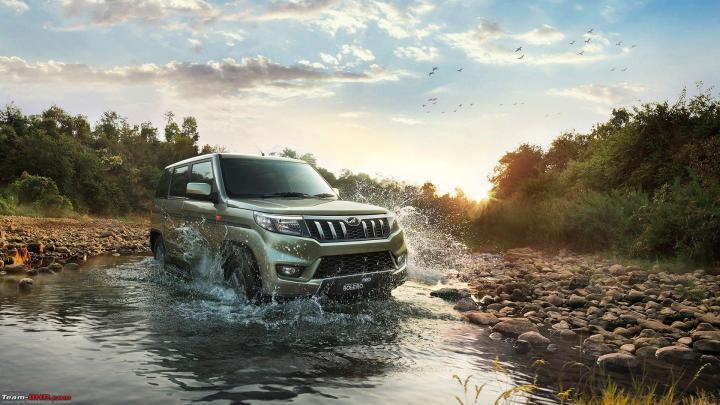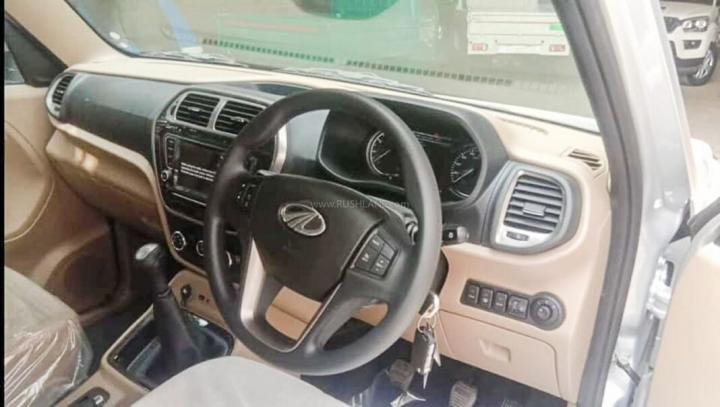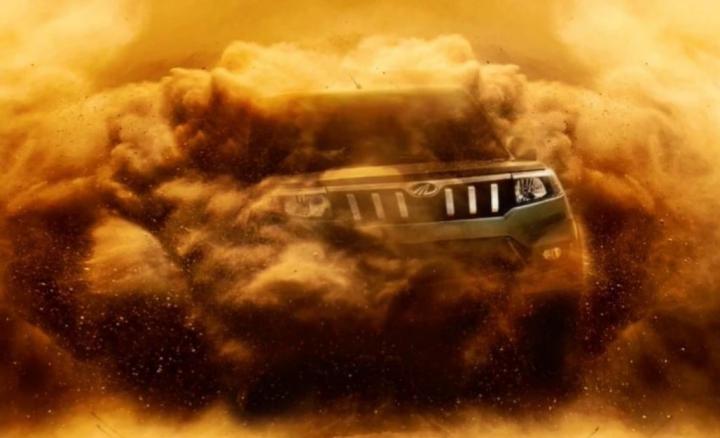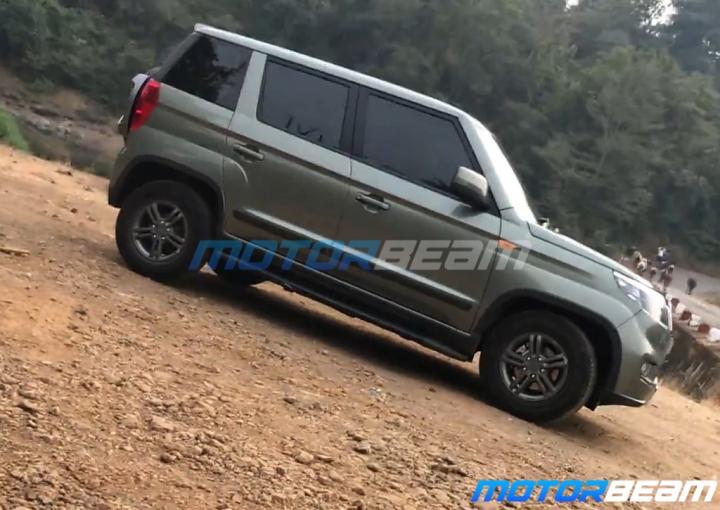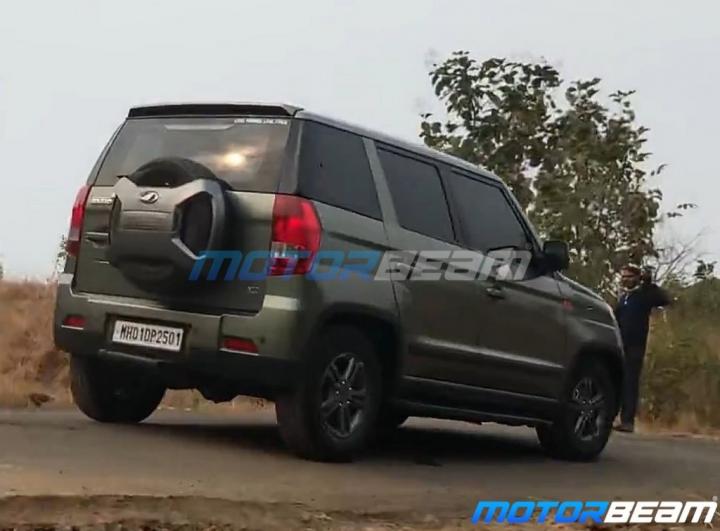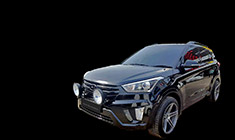News
Mahindra TUV300 mirror replacement: My experience with local dealer
Since I was driving at around 40-50 kmph, my mirror banged against the close window glass and the mirror sub assembly fell on the road.
BHPian AutoIndian recently shared this with other enthusiasts.
Yesterday (i.e. 21-Feb-2024), while going to the office, after I crossed the Bhumkar Chowk, I tried passing by a stationary trailer but too close for any margin, and my LHS mirror brushed against its body. Since I was driving at around 40-50 kmph, my mirror banged against the closed window glass and the mirror sub-assembly fell on the road. I parked my car a few meters ahead and came running back to pick up the fallen mirror. Unfortunately, it had cracks all over the surface and when I fitted it back in the mirror housing, I could barely see anything at the left rear. However good part was that the housing was intact and the power mirror assy was functional normally. On calling the local Mahindra dealer (Savan IB Autowings) I was informed that the assembly was out of stock and would need a day's time to get it in stock. Today morning when I called, I was informed that I could come & get it replaced. When I went there (without an appointment) I was asked to sit in the reception and in 5 mins some Service Advisor would attend my car. After 10 mins the receptionist came and informed me that all the SAa were busy & I will need to wait for 1.5 hours. Another option was given to me to go to the stores, pick up the mirror, and get it fitted from outside. So, I preferred the second option. Went to the stores, raised a request, paid Rs 266/- at the cash counter, showed the invoice to the stores, and got the mirror. I myself fitted it inside the mirror housing by press fit. To be doubly sure that it got fitted properly I asked a nearby standing SA to check & confirm, which she did happily. Drove back the car home with the new mirror in 30 minutes.

The broken mirror sub assy LHS
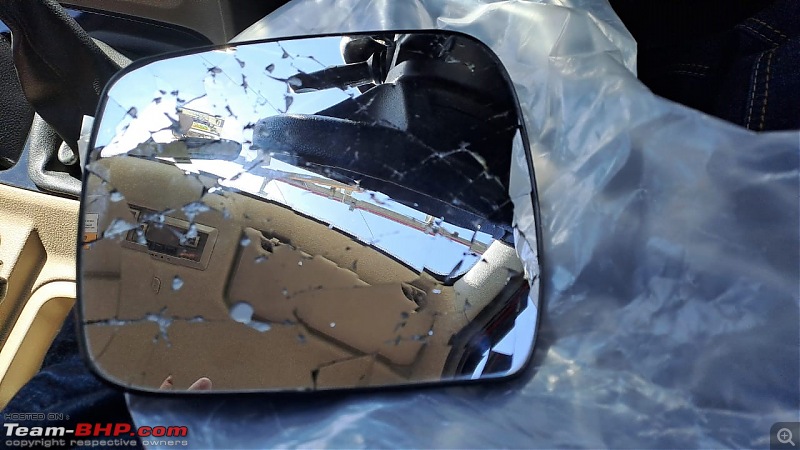
The mirror taken out from the housing, and cracked glass

The rear side of the mirror

New mirror fitted inside the housing (press fit by hand)
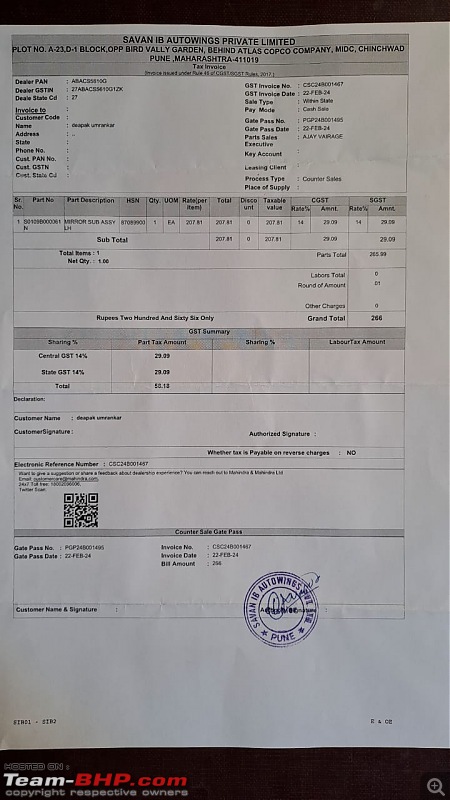
Invoice
Check out BHPian comments for more insights and information.
News
TUV300 stuck at service centre for 5 months: No fix in sight!
The SUV has been waiting for one specific part since August 2022, with no action being taken.
Thanks to Mohammed Imran for sending this in. Heartfelt gratitude for sharing it with other enthusiasts via this Team-BHP share page!
Hi Sir,
I am a regular follower of Team-BHP and I trust that you will be able to help me and guide me through this as I am very helpless.
This is with regard to the unavailability of a part for my TUV 300 Automatic T8 and the vehicle being stuck in the service centre for the past 5 months.
The vehicle was bought by us with only the trust we had in the Mahindra brand. We were the first person probably to buy the top-end automatic TUV in Bangalore.
The vehicle has been sitting in Mahindra Service Center, Bangalore for the past 5 months. A part called Actuator Block Assembly has been ordered by the service centre in August 2022 and till now we have not got any response on the same.
We were already heartbroken when we were informed that one part costs Rs 70,000, but now it's very disappointing that for five months the vehicle is stuck in servicing without any date.
Only I drive the vehicle and there is no driver who will drive it rashly or cause problems to the vehicle. Apart from that the vehicle mostly travels from my home to my office. The vehicle is driven by me with utmost care and love. For the last 5 years, there is not even a single accident in the vehicle. The vehicle has just clocked 55,000 km which is so less.
We had immense trust in the Brand Mahindra and this made us purchase this vehicle. But this has shattered our confidence in Brand Mahindra.
My old father has to be taken to hospitals at regular intervals for medical check-ups. For the last two months, I have been taking my father to the hospital in a cab.
The car is getting spoiled standing in the service station each day and it's sad to see our dream car getting spoiled right in front of your eyes.
Can someone help me with this or give me advice?
I have sent numerous emails but for the last 5 months, the same response is that we are working on priority to get the part. And no one in Mahindra is helping.
Feels so helpless when such a big corporate company is not helping customers like us as we do not have a voice.
I have even tweeted Anand Mahindra but no action taken. Thought you can help me with some guidance.
We are very helpless as no one is helping us. Requesting that you please guide us or help us in any way.
Thanks & Best Regards.

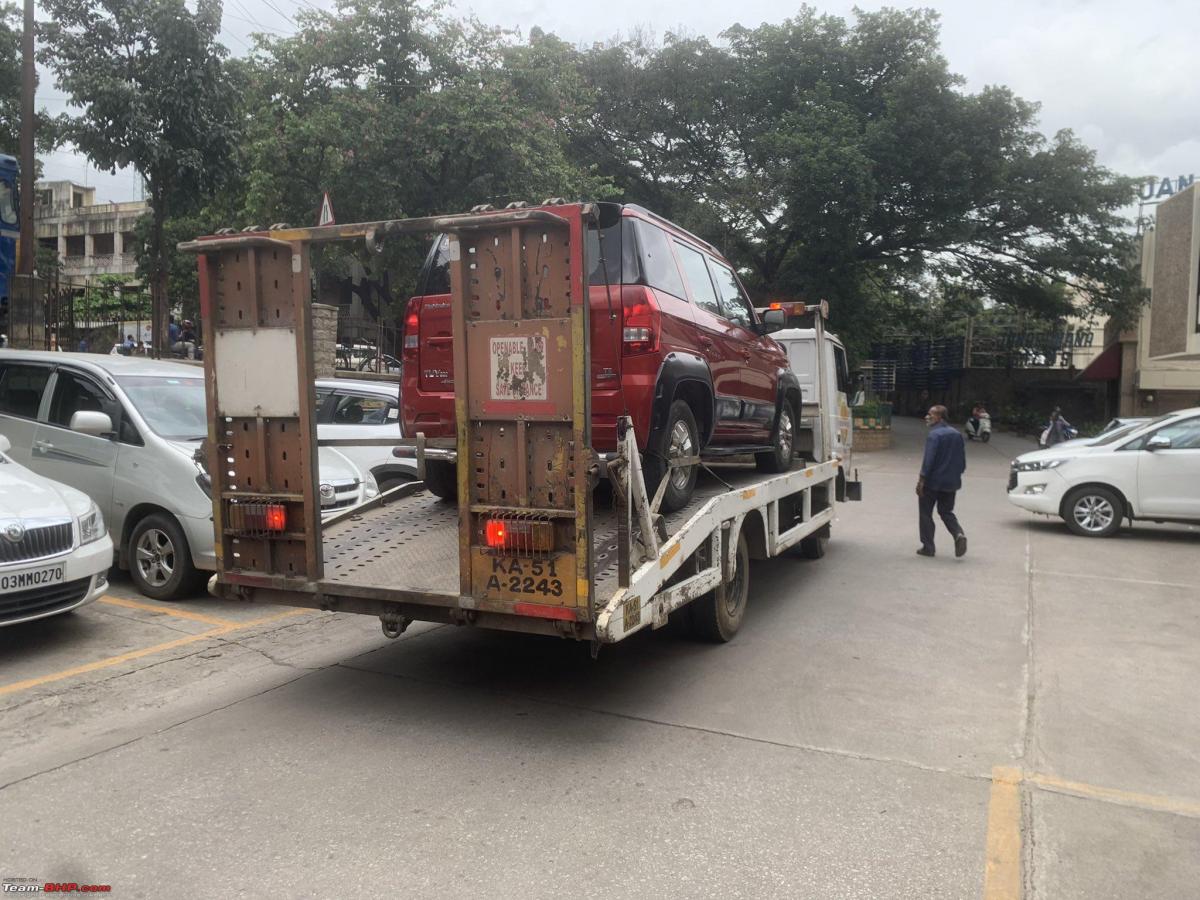
Check out BHPian comments for more insights and information.
- Tags:
- Indian
- TUV300
- Car Service
News
2017 Mahindra TUV300 AMT for Rs 5 lakh: Buy or avoid?
The SUV will complement our other cars in the garage, which include a Tata Tiago & a Honda City.
BHPian tyroneshoelaces recently shared this with other enthusiasts.
I am looking to buy a pre-owned car for some time now and yesterday came to know about this 2017 TUV300 T8 AMT dual-tone which apparently is in great condition. The car has done about 65,000 kms and the owner is firm at Rs 5 lakhs.
I was hesitant about the test drive as the locality has narrow lanes with quite a bit of foot traffic, but the owner insisted that I do a short test drive. He drove the car to a very pothole-laden, undulating and unpaved road and I liked the suspension quite a bit. My father was in the back seat and he liked it a lot as well. For reference, our daily city drive is a Tiago and our highway runs are done in our Honda City. So the TUV will complement our existing cars very nicely. Anyways, the owner then insisted that I drive the car as that road is quite wide. I agreed and drove it for about 10 minutes, never exceeding 35 km/h. I liked how it drove, the pickup and the response. I then gained enough courage that I drove back to his home through the narrow lanes.
At the time of the test drive, I was not aware of the reports in this forum about the AMT issues, the lags, jerks, sudden acceleration and braking response or the lack thereof. I did not experience any of these in my short test drive, but I never drove it fast or in a bumper to bumper traffic or on an incline. It was very illuminating reading all these reports and experiences of other members here and to be honest quite disheartening, as I really liked the car, and especially the colours, creamy white with black dual tone. But if it's going to give me trouble in the near future, I better avoid it. Reliability is my first concern as without that peace of mind is gone, I cannot trust the car outside of the City, money-draining to fix the issues and wasted time.
I looked for long-term reviews here for the AMT but only found some for the MTs. Some members here have advised other members to not go for the AMTs. So with these in mind what should I do? Is the price right? Is it worth the hassle?
I will really appreciate it if the knowledgeable members here please chime in and guide me in the right direction. A couple of months back, I posted here about EcoSport and got really great guidance and did not pursue the car any longer. I am hoping I get the same great guidance and help.
Thank you.
Here's what GTO had to say on the matter:
Absolutely avoid the TUV300, it is a horrible match. The AMT is jerky & terribly unreliable. A BHPian or two got so fed up that they sold the car prematurely.
The TUV300 otherwise is a very good car, especially in the "plus" guise where it got the bigger 2.2L diesel engine. I'd say it's a superior car to even the last-gen Scorpio.
Here's what BHPian Kosfactor had to say on the matter:
The MT is very good, light clutch, easy controls and a very tractable engine. You should go for the 100 bhp version if at all it comes your way - MT only, no AMT please.
AMT is to be avoided as per the technician from M&M.
Here's what BHPian anjan_c2007 had to say on the matter:
Around 2009 or so Mahindra offered an AT variant of the Scorpio MHawk. The gearbox fitted was sourced from Australia. A friend who owned one was stranded in his Scorpio AT in a snowy tract in J&K. The SUV was taken in a truck to the ASC and post repairs, it was sold soon after.
And now the TUV 300 AMT issues have surfaced. Most other car brands offer AMT but we rarely read about the malfunction.
The lesson we can now draw would be to train ourselves to keep a long distance away from such Mahindra AMTs.
Check out BHPian comments for more insights and information.
News
Why I bought a used Mahindra TUV300: 40,000 km ownership experience
Buy it if you are the type of person who'd have bought a Mahindra Jeep instead of a Contessa or Premier Padmini in the good old days.
BHPian theqca recently shared this with other enthusiasts.
My initial thought was to do a write-up around this car mainly because when I tried to get info before buying one there was limited information available.
Ownership reviews on this forum helped to a large extent and I read through all of them. The official review is a great thread which gives you an excellent perspective on what the tank feels like for the first time.
My post here is to document my findings/learnings from an old 2015 second-hand TUV 300 which I've driven for 40k km over a period of 2 years and I'm going to skip all the information that you'll get in the official review about specifications etc.
But I'm bored on a Sunday evening so I'm adding some more to what originally was just supposed to be a reference point for existing / future TUV owners.
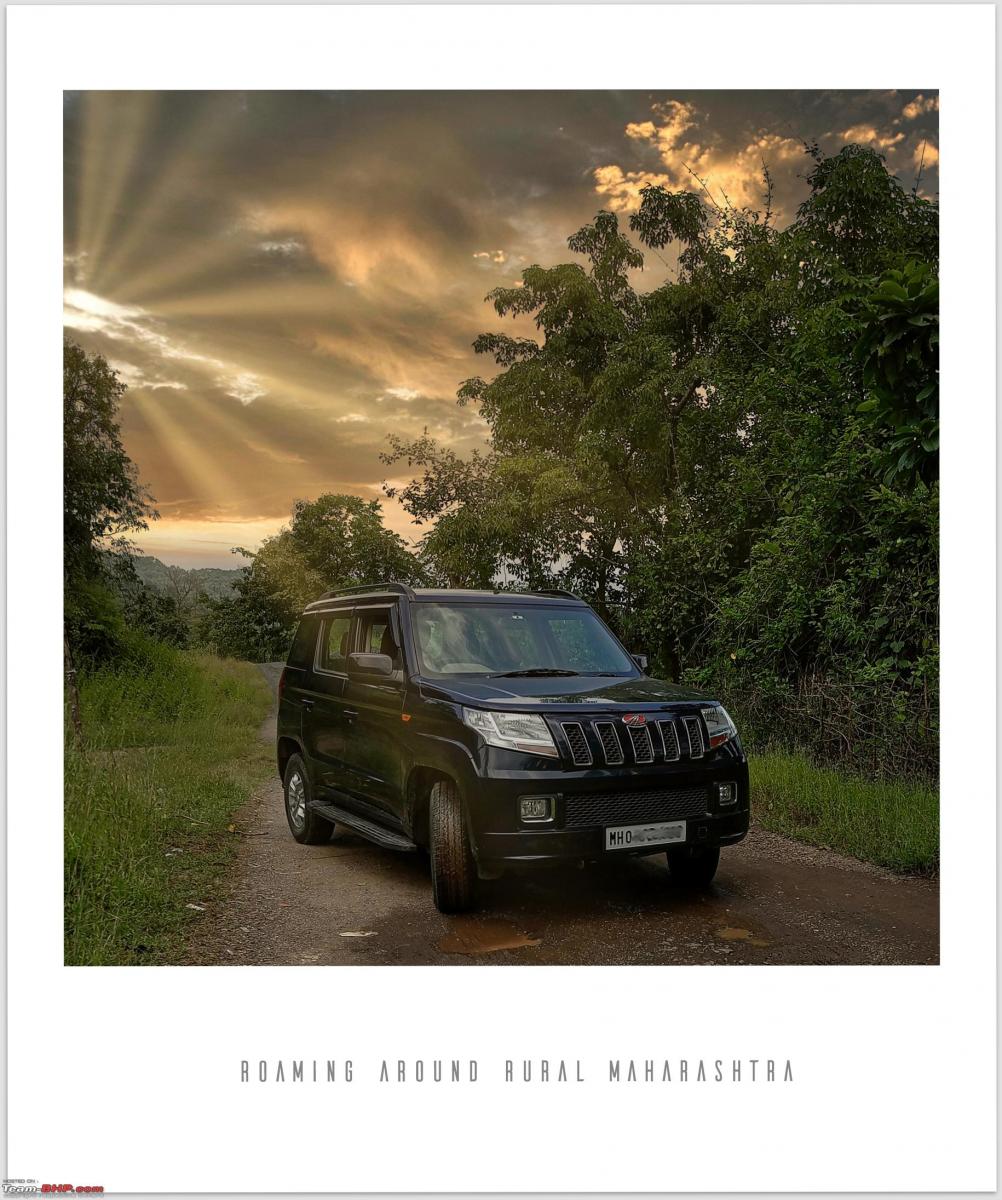
Why I bought one
I always wanted a Jeep. (the Mahindra types not the fancy Compass).
Couldn't afford one when I was in college. Then I grew older and richer.
Bought a nice Honda City top-end automatic. With gears on the steering wheel - When I wanted to pretend I was Ayrton Senna or Prost. No, not Hamilton. Wifey likes that guy. That's one good reason to not be him.
Got bored. (Of the Honda)
I thought to myself - I need a Jeep.
Like most people in their 40's, I've started thinking out loud. It sounds cool in boardroom meetings - "I'm thinking If we blah blah blah....."
Doesn't feel cool at home though.
Wifey screamed - No!
I thought to myself that usually means yes.
When I thought some more I realized that I can't really buy a jeep to go to work and drive out of town about once a month. The new Thar wasn't out yet and the old jeeps that felt so cool in the early 90s didn't feel all that good in 2020.
Or maybe the CJ340 and the 550s and the Commanders and whatever still feel the same as they did in the summer of 1990 but my preferences evolved over years.
I remember driving a friend CJ340 / Classic way back in the good old days when it was new. It felt so good. I remember driving a Commander, Willys as well as some Jongas over the years in various places all over the country. Was fun.
I remember some of them with 3 gears, some with 4. Some 4x4, some 2WD.
I remember drooling over the Classic parked at a showroom at the corner diagonally opposite Bhavans (on the road that leads towards Peddar road). I used to make it a point to stop and admire that beast with wire wheels and those bull bars and truck-type mirrors.
If any of you lived in town in the 90s you'll know what I'm referring to.
If you still don't know what I'm referring to you can ask one chap called GTO to share a pic of his Classic from the good old days.
I don't know why they are called Jeeps. I know about GP and general-purpose and all. But in India, a Jeep refers to anything that's made by Mahindra and more or less looks somewhat like the old American "jeep". This "somewhat" is a very vague term. It includes "jeeps" without doors, with 2 doors, 4 holes for doors as well as 4 doors (not counting the one behind because then it would be 5). It includes hard tops as well as soft tops.
Here's what I found out from the net about the Mahindra range of vehicles I was thinking about.
- MM540: It came in both 2WD and 4WD. It had a 2.1 Litre 62 BHP indirect-injection diesel engine (XDP 4.90) with a 4-speed Gearbox.
- MM550: An MM540 itself, but with 4x4 (no 4x2 variant) with refreshed interior and a 2.5 Litre 72.5 BHP indirect-injection diesel engine (XD3P) with a 5-speed gearbox.
- MM440: MM540 fitted with a petrol engine (hurricane F-134). Only in 4x4. Later it also had a 1.8 litre Isuzu engine and was called MM ISZ.
- CJ340: The civilian jeep (CJ) was produced in the USA. It had different versions over years like CJ3B/2A/4/5 and so on. In India, Mahindra manufactured the CJ3B. It came with the Peugeot 2.1 engine. It had an SWB (Short Wheel Base) chassis.
- CL340: After the 1970s, CJ was renamed CL.
- Classic: It was a limited edition CL340.
- MM650: It was the MM540 with LWB (long wheelbase chassis). Was also available with 4x4.
- MM750: This was a longer MM650, targeted as a UV to transport people.
The Maruti Gypsy was out - I had enough of those in my earlier life. The Jonga was out - While I liked them, I didn't feel like driving them.
What I really wanted was a Commander / 540 etc but with all modern comforts like air-conditioning, power steering, disc brakes, airbags etc.
The (older) Thar felt like a (slightly) modern CJ340. But it was small. I wanted something larger so the family cant crib about only 2 doors blah blah blah. The other issue I have with the Thar is also the lower fuel economy. I roam around a lot and need something that is easy on the pocket.
- I wanted a ladder-on-frame chassis so that it feels like a Jeep.
- I wanted rear-wheel drive. (I didn't really need 4x4 as I wasn't ever going off-road. I don't see the point in driving over rocks and boulders. I'd rather hike.)
- I figured the Mrs will complain about body roll.
- Casper the golden retriever enlightened me with ancient zen wisdom - the missus will always complain. If it isn't body roll it'll be something else.
- Russel Peters chipped in - Be a man.
The only vehicle which seemed to tick all the boxes was the TUV 300.
My search commenced with the usual Olx adverts. I had made up my mind that I do not want to buy a car from a dealer. Apart from the inflated cost, I really enjoy the entire experience of working on my cars and bikes and doing them up. To me, that is part of the ownership experience which I can’t get if I buy something from a dealer where he's already camouflaged all the problems. Those problems then hit you suddenly at the wrong time - like just when you are about to pick up Kelly McGillis.
Found one on Olx. A place called Mira road - Didn't like the way the guy spoke. It sounded like he was doing me a favour. Said he'd just paid some huge amount for a brand new Innova etc. I don't like people who talk big. It's a TUV. Not a range rover. Even if it was a range rover I'd still want to buy from someone who behaves normally. I didn't go to see the car. Maybe it's a bit too much to expect basic courtesy and etiquette these days. Maybe it was a good car and I missed it but it doesn't matter. The car was white. Good enough reason to not buy it. It's apparently the most common car colour in India. I wanted black.
The next car on the list was owned by a gentleman in Panvel. Too far away.
The next one was owned by a cop living somewhere closer to my place than Mira road. 2nd owner. Went and met the guy. Saw the car. Took a test drive. Told him I'll get back to him. He was courteous and shook hands. Said take your time sir. I searched some more, but couldn't find anything that was worth the amount I was expected to pay.
The thing is I have this thought in mind that the TUV is not a top-end fancy car. It's not a Mercedes G wagon. It's a Mahindra.
It's a tough car that can handle a lot of punishment.
Low maintenance. Easy to fix.
It is a vehicle suitable for roaming around on bad roads. In rural areas too where there are no real roads.
So I can't get myself to think of an amount more than 5 lakhs for a used TUV 300.
Went back and met the cop. Took another test drive. This time a longer one. Drove around Sewri and Dockyard weaving around trucks and tankers and then took the eastern freeway from town to Chembur and back. Did the deal. Got the car.
Went straight to the local mechanic for a check-up.
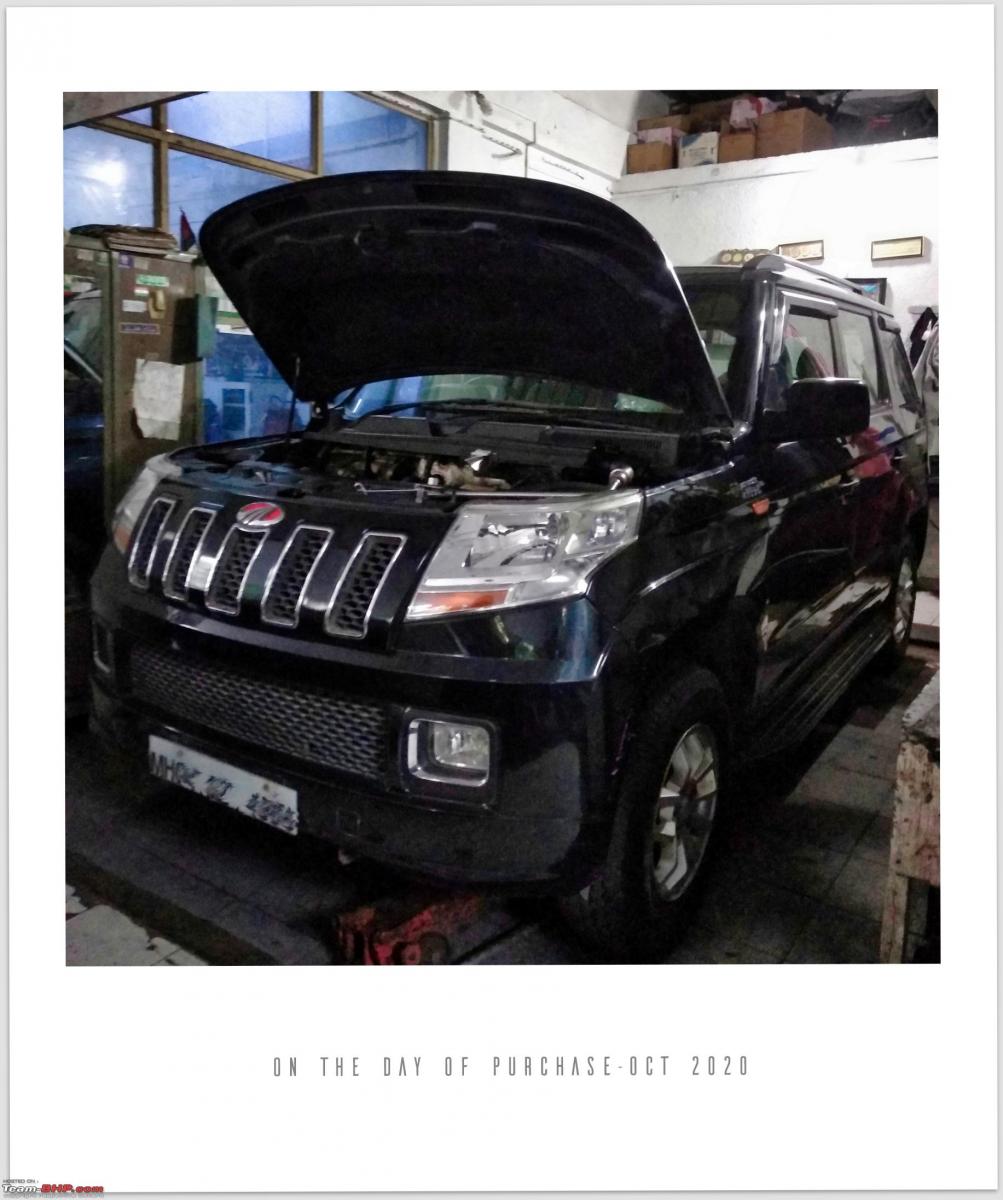
I'm not sharing too many photos mainly because as I said earlier I'd like this write-up to serve as a reference point for existing owners or someone planning on buying one so sharing some known issues and possible fixes as well as things to watch out for in this car (tank?). To me, that makes more sense than forcing you guys to look at photos of what I bought and where I went.
- Model - 2015 T8 Manual
- Purchase date - Oct 2020
- Km run at the time of purchase - 40k
- Current reading - 81k
Known Issues with the TUV
Wheel spin - the rear wheels spin if you push the accelerator a bit too hard if you've stopped just before a bump/speed breaker. This happens in reverse as well as forward gears especially if you've turned the steering wheel at the same time. I've never had any wheel spin issues after I started making a conscious effort to control the acceleration. Mahindra had apparently solved this problem by making some changes in their suspension and/ or offering an MLD kit. I haven't bothered with either replacing the suspension or putting in an MLD kit. My car is not in warranty and as I said earlier I don't want to spend too much on this car. I've never had any problem due to this wheel spin. The trick is to not accelerate hard once you've stopped before a speed breaker. Do it gently and you won't have any issues. If you still need an MLD kit you can get it from Mahindra or an after-market one from a company called Eaton. Google them for more details.
Starting "problem" - there is some sort of an issue where the car does not start the first time you turn the key especially after you've driven the car for some time. The motor turns, but the car vibrates and the engine doesn't start firing. You need to turn it off and give it another go - it then starts ticking over like a charm. The company as usual had some stupid diagnosis. Said sir you need to change your battery. I plopped in a larger battery. The starting issue remains. Though I must say it always started the second time when I turn the key. I did some research and some TUV owner in Punjab gave me the solution - it apparently got something to do with the fuel pump but I'm ok with having to turn the key twice. I don't feel like going to Mahindra. I pretend it's an old Commander and needs the "heater" before starting. Now if only it had a choke lever I'd pull that out to stop the engine too. Anyone who's driven an old jeep will know what I'm referring to.
Coolant leakage - the coolant level keeps magically reducing. I lived with it for 20k km. Mahindra said some 3 parts of the pipe/tubes were leaking. They had just 2 of them in stock. I said no. You either do all 3 or leave it the way it is. The leakage wasn't very severe. Coolant would need some topping up every 200 km. I usually just push in water and not coolant. It's a Mahindra after all. Works well without any fancy stuff. I got the car checked by the local mechanic recently. He found some leakage near the (flange I guess it's called) which connects the pipe that pushes water/coolant in/ out of the radiator. He put in a new one for around 1500. The coolant level hasn't dropped after that at all. I still carry a bottle of water just in case. Haven't needed it though. God knows which 2 other parts Mahindra said needed changing.
Thud sound - from somewhere below the gear lever/handbrake when you hit a bump suddenly. Sounds like something is loose. It isn't. Won't result in any problem - there is a bushing that needs replacement. Costs around 1500 bucks approx. Part number 0703CAP01341N. It's called a mount rear shifter link. If you are not ok with that thud sound then that part needs to be changed. I thought I'd do it on day one. But it's been some 40k km now. Yes I know I'm being lazy. Wifey keeps reminding me.
Rust - it's around some door handles and at the top of the driver-side door frame. Painter /Denter laughed when I said it's rusting and might fall apart - "sir this is a Mahindra. It's like that only. Nothing will happen. Keep using it. When you have time for about a week or so bring it. We'll get it done" Oops. This conversation too occurred some 40k km's ago.
Paint quality - maybe my standards are a bit high but I now know why all those old jeeps looked so different from the other cars. The paint quality even after polishing is nowhere near what I've had on other cars I've owned. So I've just left it the way it is. Stopped polishing the car. Let it look a bit rough. Mahindra calls it a tank. Let it look like a tank. I've seen lots of real tanks. So I know what I'm talking about. No more polishing and wondering why it ain't looking like the other cars.
The car pulls to the left - after wheel alignment/balancing you need to go for a drive and then get it adjusted manually via trial and error. Front left wheel. Don't leave the alignment centre without getting this left pull bit checked. It's gonna happen even on roads which are not sloping towards the left.
The radio starts when you put the infotainment system on - can't figure out a solution apart from removing it and putting a touchscreen but then the alerts would disappear. I like those alerts. No not the one about the seat belt - that's irritating. The ones about the handbrake being engaged if you start driving accidently without putting it down and the doors/bonnet not being closed properly are important to me. The same goes for oil pressure, battery etc. So you need to live with the radio static being heard at some 87 points something megahertz every time you turn on the infotainment system. Takes a few seconds to connect the phone/switch to Bluetooth etc.
The key remote gets cracked / buttons get messed up because of being pressed too often - bought a replacement plastic key shell (amazon) and a silicon key remote cover (Amazon again). Put it on the key original fob. Problem solved.
Some other quirks which I've realized over the past 40k km which I didn't know existed at the time of purchase.
Body roll - That's the way the car is made.
Live with it. Like it. It's like Chinese food - an acquired taste.
Don't try solving it with Rogerab. Well, you could put Rogerab or a similar fitting but then the suspension becomes stiffer and I feel the suspension won't last as long as it would normally do. The solution is to drive straight over bumps and not approach them at an angle and to drive faster than you would normally do in a small car. Just pretend the bump or pothole isn't there and the car just keeps going. Don't slow down to around 10kmph as you'd do in a sedan. Just roll over it at around 40kmph. Yes, passengers are supposed to hold on tight in a jeep. Why do you think they've got those handles above the door?
Brakes - they do the job as long as you drive the car the way it's meant to be driven. Not as good as the ones in my Honda but then I don't drive the TUV like I'd drive my Honda. Neither do I drive the Honda the way I drive the TUV. ABS works. The error warning light came on once during the rains. Faulty sensor. Brakes however continued to work as they should even when the ABS sensor was acting funny and telling me it ain't working. Coming back to the main point - don't expect the brakes to work as you'd have on a modern Italian car. It's a large heavy tank - it won't come to standstill from 100 km/h in 2 seconds. The factor that into your driving.
Window button placement - it's in the middle and not on the door for the driver and passenger. Doesn't feel normal.
Driver and passenger armrest - It is comfortable. But looks ugly. Should have been designed to look a bit better. It looks like an afterthought. Or like those armrests, they used to have in the govt owned Asiad bus in the good old days. The car looks better without those ugly armrests. The thing is they are extremely comfortable and feel great for the driver and front passenger.
Headlights - the bulbs gave by the company are not bright enough for highway use in India. I got a relay and bulbs of a higher wattage fitted.
Static bending lamps - the left one keeps konking out for some reason. The bulb is fine. Some issue with the fuse maybe. I can't locate it. Mahindra wanted to check the entire wiring / change it etc. I decided to live with 1 static bending lamp not working till I find the time to get my hands dirty. (Static bending lamps - these are additional headlights that turn on when you turn towards the left or right above a certain speed)
Seat belts - don't retract unless helped by you pushing them up a bit unlike the ones in my other cars which immediately go back to where they should be. Mahindra said they can't change just the spring. Need the entire seat belt assembly to be changed. I said never mind.
Clutch - I've heard some owners complaining about clutch failure at around 40k km. The company asks you to change the entire assembly and flywheel and whatnot. I know of owners who've apparently changed just the clutch master cylinder. And the car runs fine forever after that. Maybe there is some design issue with the older clutch master cylinder.
The guy I bought the car from had done the following changes -
- Clutch plates and master cylinder changed
- The starter motor was overhauled.
Work I've done over the past 2 years
Battery - changed to a larger batter thinking it would solve the starting problem. It didn't but the larger battery is more suitable for this vehicle. Mahindra put in that 65 Ah battery most probably to keep costs low.
Headlight relay and bulbs - needed this as I had to drive extensively on highways and places where there were no streetlights.
Differential oil change every 20k km - the company says 20k.
Gear oil change every 20k km - company says 20k.
Air filter and AC filter - every 20k km - the company says 40k km for the air filter and recommends merely cleaning the AC filter.
Engine oil and oil filter every 10k km. Normal oil. Not fancy mineral oil. Don't see the point in using fancy oil in a TUV. The company says 6k km. Mahindra sells two types of oil filters. One is slightly larger and one smaller. The correct one is the smaller one but I'd put the large one once when I didn't know which one goes it. It didn't make any difference though.
Wipers - changed once. Just buy any brand as long as the size is more or less the same. It need not be an exact fit.
Coolant leakage - details mentioned above
Brake service and pad cleaning - every 20k km. The company says 30k km or 2 years for brake fluid. I changed it once about 40k km ago. I get all 4 brakes serviced (meaning cleaned and lubricated where needed) every 20k km and then top up the brake oil if needed.
Wheel alignment and balancing- every 20k km
Seat covers - Didn't like what the company gave. Put some seat covers from Opera house. Shoddy job. Not very happy with the fit and finish but it's better than what came with the car.
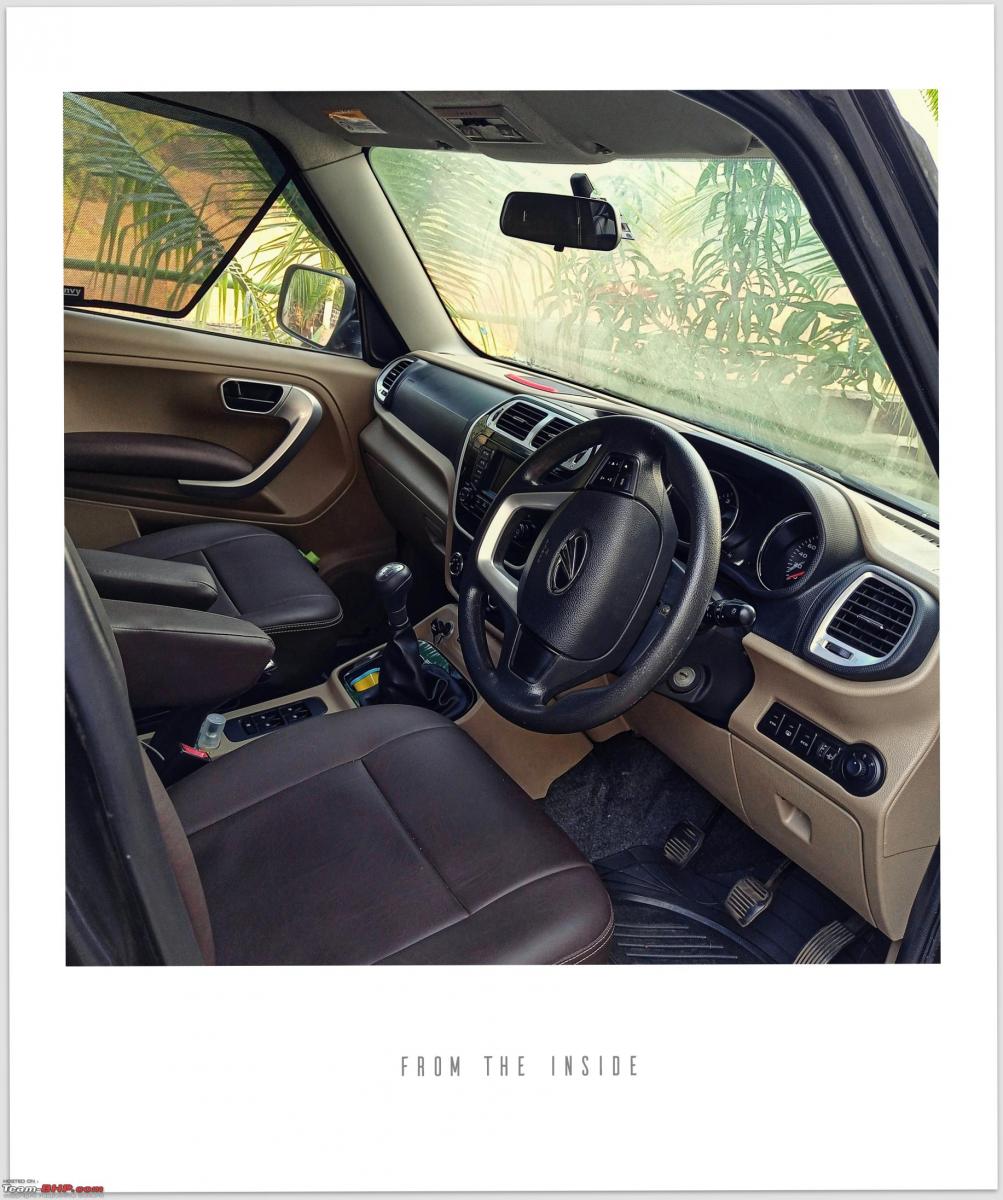
Tyres - the car came with CEAT tyres - highway tread pattern. I got Goodyear wrangler (all-terrain) tyres fitted. Upsizing tyres and putting in wider ones increases fuel consumption. Stick to the same size. The Yokohama tyres with white letters look better but are more expensive so I went with the wranglers. In case any of you are thinking of a tyre upgrade from your stock tyres, think about the sort of roads you'll be driving on. If it's mainly good roads then get the highway tread pattern. If it's a mix of bad rural roads and highways then get the all-terrain tread type tyres. Pure off-road tyres are a waste on this tank. They'll only help in burning more diesel.
Horn - the ones that came from the company weren't good enough. I prefer the SSkoda-type sound as opposed to the "peep" that we get from most cars. Bought a pair of Minda horns. One konked out after about 3000km. Have now fitted one original horn and one Minda trumpet. Has been working well for some months. No complaints.
Steering wheel cover - Needed the steering wheel to feel a bit thicker.
Antenna - was broken. Fixed a new one. Looked good for about a month. Broke. Now I'm living with the broken one. I don't plan to fit it again. The remaining portion still looks good and doesn't really look broken.
Speakers - what the company gave was not good enough for me. So put in some better ones to make Mark sound better. No not Mark from the office. Was referring to Knopfler.
Whistling sound - Kept hearing it on some occasions. My brains told me it's something to do with the turbo. I went to Mahindra. They said it was normal. The mechanic said sir this is a Mahindra diesel engine. If you don't hear any sound then there most probably is something wrong. The sound you are referring to isn't a turbo "problem". You've driven the car for 80k km. If there is some air leakage issue you'll find a difference in the car's performance. It will be extremely sluggish. You just keep driving for another 80k km. And even if the turbo fails at some point in time you'll be able to continue driving till you reach a service centre.
Rubber belts (fan belts) - I changed them at 40k km when I bought the car since I just wanted to be sure that nothing suddenly goes kaput. That's one rule I've always followed with cars I've bought used. Change the liquids and belts and tyres and wiring/fuses where needed before you start using it.
Some more information
Heavy clutch - is irritating in traffic. My move from a Honda automatic to a Mahindra TUV was great till I was jobless and wandering around. Now after driving from town to Malad every day my left thigh muscles seem to feel different from the ones on my right leg. The good thing is the torque so you can move in traffic without pressing the accelerator. In fact, you can drive from zero to about 40 to 50kmph without pressing the accelerator at all as long as you keep shifting up in time all the way to 5th gear.
Squeaking Clutch - Can’t do much about this. I got Mahindra to change the clutch pedal shank assembly but it still squeaks when you press the clutch pedal. They should have just kept a normal spring-like in the older jeeps. I could have oiled it manually and resolved the issue.
I think it's a great car. I don't slow down for bumps and bad roads. I just keep driving irrespective of road conditions. In the tank you just drive through puddles or in heavy rains when everyone else tries to slow down, everyone else stops or tries going around the pond in the middle of the road. Sorry I meant puddle. You just blast through as if the bloody thing didn't exist.
A lot of rural roads around the farm are not roads by modern standards. I think an obstacle course would be a more appropriate term for them. But the TUV handles them well.
Speed - cruising speed / ideal speed - I believe you need to drive/ride cars and bikes keeping in mind things like the capability of the vehicle and not just your own skill. So to me, a TUV 300 is good enough for up to 100kmph. People might boast they've done 140...big deal. It doesn't mean the vehicle is ok to be driven at that speed. Drive a BMW at 140 and then the TUV at 140 and you'll know what I mean. The TUV is great as long you keep in mind the fact that it is not meant to be driven like a sports car. You keep the RPM around 2000 and drive normally between 60kmph to 100kmph and it feels great. Around 90kmph to 100kmph it feels like you can keep driving forever. After 100kmph it feels like you need to now start focusing a bit more. After 120 it feels like you need to go back to 100kmph immediately unless you really like tempting fate.
Fuel consumption - 14 to 15kmpl overall. Anyone who says 20 (like some chaps do online) needs lessons on how to calculate fuel consumption. Or they are saying it under ideal test conditions or they've got that figure by driving without pressing the accelerator. But you'll get around 15 even if you keep pushing the tank hard.
Ideal Usage - I purchased the car during the lockdown and I was jobless thanks to downsizing that happened at that time. Yeah, I know buying a car after losing your job isn't a very wise thing to do. I was mostly driving from Bombay to the farm near Raigad and made trips to Panchgani / Nasik where I have small pads so it was a lot of highway usage. I drove to a few beaches and some hills around Maharashtra too.
Once I resumed working around 6 months ago my outstation visits have been reduced to once every 2 months but I'm driving to work every day. I find it a bit cumbersome in Bombay traffic. It's a large car and you won't like it at all if you have to drive during peak hours.
7-seater myth - The seats at the rear are not really useful, to be honest. I'd say it's more of a 5 seater. Yeah, the rear seat (middle row) is actually good enough for 3 adults, unlike most sedans which I feel are more of 4-seater cars (with just 2 people in the rear seat). The 2 seats in the dicky in the tank are mostly used to keep stuff like maybe a box or bag and I'd say you could perhaps get someone to sit there if you threaten them. They'll sit there quietly till they suffocate. Or they'll open those quarter glass panels because the AC definitely doesn’t reach back there.
The sensors on the car gave me some trouble. Twice. Sorry thrice. What I've realized is that the tank is quite a reliable vehicle. The sensors appear to be its weak point. They tell you there is a problem when it doesn't exist.
- ABS sensor comes on while I'm somewhere on the highway in heavy rains ahead of Karnala. I stopped the car wondering what the hell is happening. The brakes were working fine. So ignored the problem and continued driving. Called up the local mechanic - sir it's the sensor that is acting up. Just ignore the warning light. He was right
- Airbag sensor - the error light was on when I purchased the car. Mahindra fixed it. The cop didn't bother with it saying god knows if the airbag will really engage even if the sensor says everything is working fine. I don't know if the airbags will work when needed but I like to keep things in working condition rather than learn my lesson the hard way.
- Oil pressure warning - the sensor came on when the vehicle was hot. I turned it off and put it back on. The light went away. Again came on randomly at low speeds. A local mechanic on the Mumbai Goa highway said sir the sensor usually goes wrong. There is nothing wrong with the car. The sensor costs some 300 bucks just to put a new one. I didn't listen to him. Gave the car to Mahindra. They did all sorts of analyses and attempts at reproducing the error - finally, after 4 days arrived at the root cause. Faulty sensor. Billed me some 3k.
Key learning
Local mechanic - 1
Me - 0
Other misc inputs
Which battery should I buy?
The largest one that fits in the space there. Don't buy the one the company gave that is too small and isn't able to handle the heavy load this car needs. Buy a larger one like 95 Ah or more whenever it’s time to buy a new battery. The Ah rating refers to the capacity of the battery in terms of how long it would hold the charge. The output will remain more or less the same. So you buy a larger battery especially if you ain't using the car every day and/or you've added extra lights or something that is consuming the battery more than what the company guys gave with the car.
Which Engine Oil is most suitable for this car?
- I've used Castrol / Shell / Mobil / Mahindra / HP (once while topping up on the highway).
- I haven't found any difference in any of them, to be honest. The car runs the same irrespective of the brand.
- Apart from the initial "smoothness" that you get with all new oils. Not sure if it's really smoother or just the placebo effect. You've put in new oil so you "think" it's feeling smoother.
- My Honda on the other hand definitely felt different with expensive synthetic oil.
- This tank just feels the same irrespective of what you put in. As long as you stick to the company rating of CH4 15w-40 it's fine.
Tyre pressure - the company said 32 in 2015. Later they changed this to 34. I tried all pressure ranges. They all feel the same. No difference in handling or fuel consumption. I've been filling 34 for about a year now.
Oil Change interval - the company manual says if it's Mahindra oil then 10k km. If it's some other brand then 6k. I've kept it at 10k assuming that the company doesn't really have some special type of oil that is magically prepared and really different from what other brands have. They've just said that to make you come back to the authorized service centre more often.
The ideal way to drive - is like you'd drive an old jeep. Release the clutch without pressing the accelerator. Once the car starts rolling press it if you need the car to pick up the pace. Change gears quickly. Don't redline it in each gear. Keep the RPM around 2000 most of the time. The engine will not stall unless you are being stupid. It's not a silent vehicle. Listen to the engine while driving. It feels good.
AC Mode - I've always kept it on eco mode. Never felt the need to use the normal mode at all.
ESS - No. Leave it off always. Forever.
Rear Mudflaps - are needed if you want to prevent mud from flying on the rear windshield. The wiper there has to keep working overtime unless you fit mud flaps. I bought them for the front wheel too but didn't fit them - it reduces the ground clearance. Looks like a faulty design. It's too large. I've used the rear ones only.
Extra fittings - Mine came with the rear bull bar and sideboards or whatever those are called. I'd say those are a must-have for this tank.
84bhp or 110 bhp version - the tanks are identical. It's the same engine tuned to deliver more power. Even the 110 won't drive like a modern fast car. It's still supposed to be driven like an old Jeep.
Manual or Automatic - Manual only. The TUV 300 automatics have serious issues and I wouldn't touch them with a barge pole.
Is a Scorpio better? Yes but it's a larger engine and you'll have to live with 12kmpl. Lower if you push the car. It's also extremely difficult to find a Scorpio that is in mint condition. Most of them are used as tourist vehicles. Even the ones without yellow plates are used illegally to ferry people from point a to point b with stopovers in the middle. For this reason, they are also much more expensive as compared to a used TUV. I bought a TUV instead of a Scorpio keeping in mind the lower cost of maintenance, lower cost of new tyres, oils and liquids, better fuel economy and lower purchase price.
If I want an SUV should I buy a TUV 300? No.
- You buy the tank if you want an old traditional Mahindra-type jeep with some modern comforts.
- Yes, the tank does have a street presence and on highways, cars will move out of the way when they see you thundering towards them but it's still an old-school sort of a vehicle. It's not the same thing as a Fortuner or Nexon or Duster or Creta etc.
- Buy it if you are the type of person who'd have bought a Mahindra Jeep instead of a Contessa or Premier Padmini in the good old days.
- Buy it if you need a large vehicle which has a lot of space.
- Don't buy it if you need to corner hard and get from zero to 100 in 3.4 seconds.
As of now, I feel my tank will last for another 1 lakh km. The guys at Mahindra said they were confident the engine was good enough with absolutely nothing to be done. I need to keep reminding myself the sounds are normal. I've had zero breakdowns to date.
What I've realized is that it definitely is a tough car (tank?) which can take a lot of rough use and punishment.
It's not a posh vehicle.
If you need a fancy set of wheels then the TUV is not the car for you.
Way Forward
- I need to decide on whether I should keep the tank for another 2 years or sell it. I've always kept my cars extremely clean with not a single extra sticker or fitting (even inside) apart from what came from the company.Yeah, I've been called bawaji by the mechanics.
- But with the TUV I'm thinking if I finally get round to doing that denting & paint work then perhaps I'll put some stickers on it - Team-BHP stickers on the doors, a compass symbol on the rear quarter glass on both sides, the Mahindra live young live free sticker on the rear windshield. And maybe a large Compass-type symbol on the bonnet.
- It actually depends on where I'll be driving in future.
- If it's mainly the city then I'll need a sedan or a more sensible vehicle.
- Unless I want to keep pretending I'm John Wayne

The official TeamBhp review is an excellent resource of information about the TUV 300 with inputs from a lot of members. Do take a look.
I'd like to thank Mr Abdul Sayed (Head - Customer Experience) from Mahindra (dude, you rock!) as well as Mr Dsouza (GM of the Mahindra workshop at Sewri) and his awesome team for all the invaluable help support assistance and guidance they've given me for my vehicle. They come across as experts who definitely know their stuff well.
Check out BHPian comments for more insights and information.
- Tags:
- Indian
- TUV300
- Car ownership
- Used Cars
News
A Close Look | Mahindra Bolero Neo
Mahindra is offering the Bolero Neo in three variants - N4 (Rs. 8.48 lakh), N8 (Rs. 9.48 lakh) & N10 (Rs. 10.00 lakh).
The Mahindra Bolero Neo has been launched in India at a price of between Rs. 8.48 - 10.00 lakhs (ex-showroom, Delhi).

Introduction
Think of the Bolero Neo as an improved TUV300. The TUV300 was actually a good car and in 'Plus' guise with that 2.2L mHawk under the hood, GTO commented that it was even superior to the Scorpio. But Mahindra botched the original launch of the TUV300 up with an under-powered engine, poor NVH, heavy steering & bouncy ride quality. Worse still, Mahindra introduced the AMT automatic before it even understood the new technology. The end result was a long line of infuriated TUV300 AMT customers who had to contend with awful reliability & breakdowns. The larger TUV300 Plus variant with the 2.2L mHawk was impressive, but it was too little, too late and was never marketed properly. The TUV300 ended up selling in mediocre 1,000 - 1,500 sales numbers every month.
Mahindra stopped selling the TUV300 since the introduction of the BS6 emission norms in April 2020. Now, the SUV has been relaunched with some updates and a new name - Bolero Neo. The trend of naming an upcoming product with a successful moniker is something we have been seeing recently. Ford named its new electric crossover the 'Mustang Mach-E' and Tata did the same with the new 'Safari', which is essentially a 7-seater Harrier. The 'Bolero' brand is enormously powerful, especially in rural & semi-urban areas. Whether this works or not depends on Mahindra's sales & marketing machinery.
The Bolero Neo gets the BS6-compliant version of the mHawk100 (100 BHP, 260 Nm) engine and 5-speed manual gearbox from the TUV300 facelift that was introduced in 2019. Mistake #1 already is not giving the awesome 2.2L mHawk to the Bolero Neo. A 3-cylinder 100 BHP motor is nothing to write home about, especially for such a heavy UV.
Mahindra Bolero Neo Price & Brochure
Mahindra is offering the Bolero Neo in three variants - N4 (Rs. 8.48 lakh), N8 (Rs. 9.48 lakh) & N10 (Rs. 10.00 lakh). There's an N10(O) variant as well, but its price hasn't been revealed as yet. Weird. The only additional feature on the optional variant is a Mechanical Locking Differential (MLD). You can download the Mahindra Bolero Neo brochure here.
Since the Mahindra TUV300 has already been reviewed by Team-BHP, this report will only focus on changes made to the Bolero Neo. To read the full review, click here.
Exterior
The Bolero Neo is based on Mahindra's third-generation platform that's shared with the Scorpio. It measures 3,995 mm in length, 1,795 mm in width and 1,817 mm in height with a wheelbase of 2,680 mm and a laden ground clearance of 160 mm. Overall build quality is as you would expect from a Mahindra. It feels sturdy and ready to take abuse:
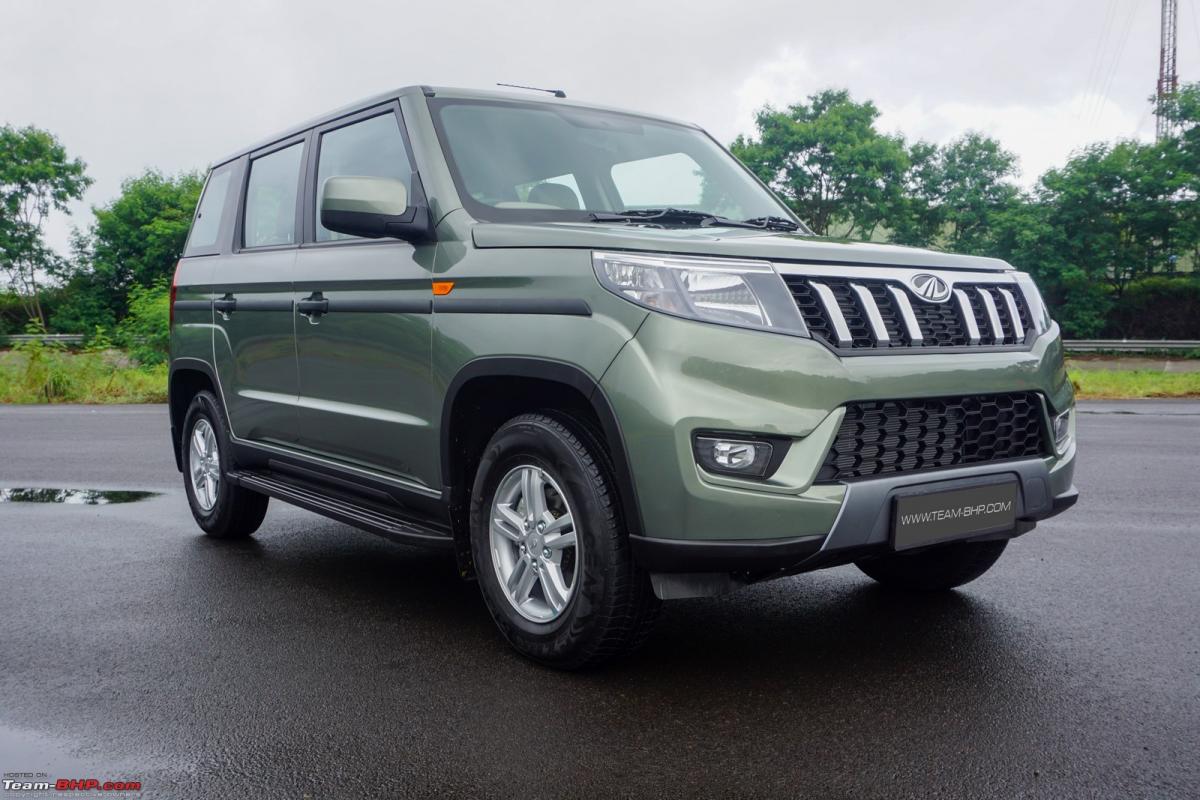
There have been quite a few changes made to the front end to help differentiate the Bolero Neo from the TUV300. Where the TUV300's 'battle tank inspired' design felt like it was trying too hard, the Bolero Neo feels fresher. You have a lot less body colour and the elements don't look oversized. The redesigned bumper gets more creases and also wear a faux skid plate at the bottom:
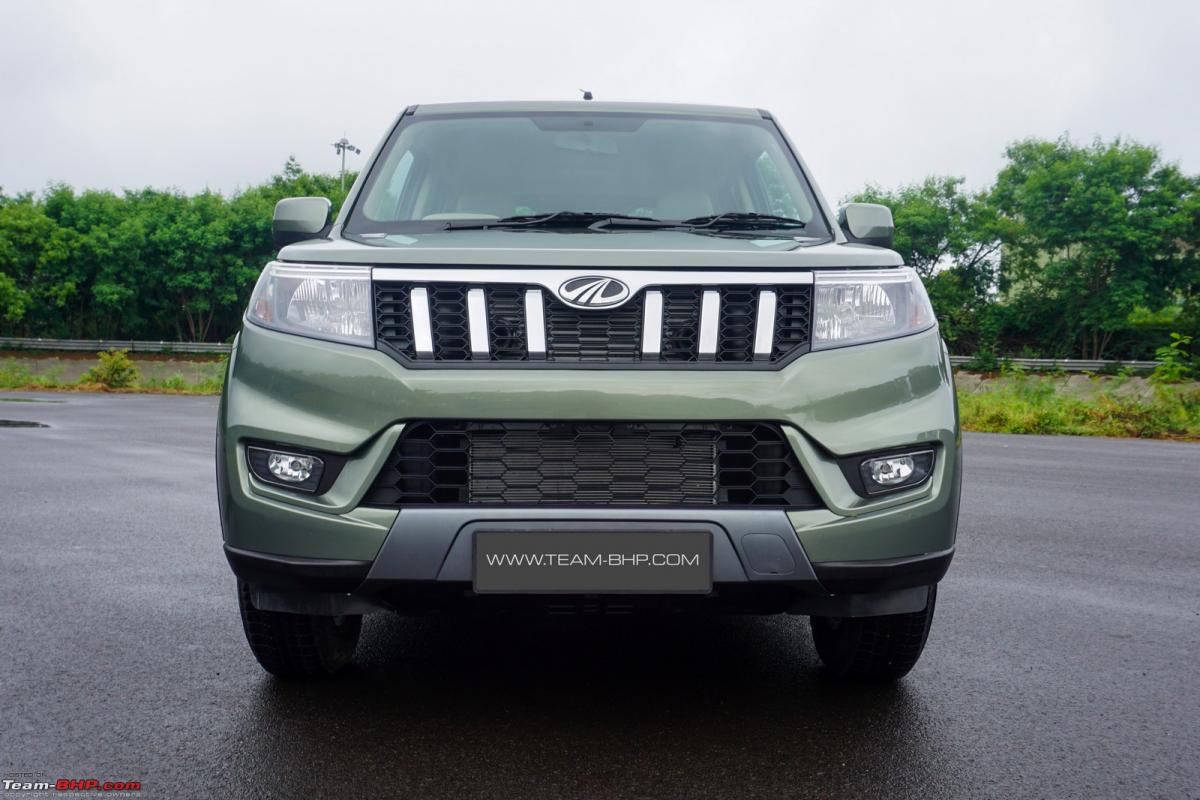
Being a body-on-frame Mahindra, the Bolero Neo is definitely on the heavier side. While most of the other compact SUVs weigh in the ~1.2-tonne range, the Bolero Neo has a kerb weight of 1,555 kg (N4 variant). The power-to-weight ratio is merely 65 BHP / ton (now you know why we want the option of the 2.2L mHawk like in the TUV300 Plus):

The rear is almost identical to the TUV300 except for the obvious Bolero Neo badging and some minor changes:
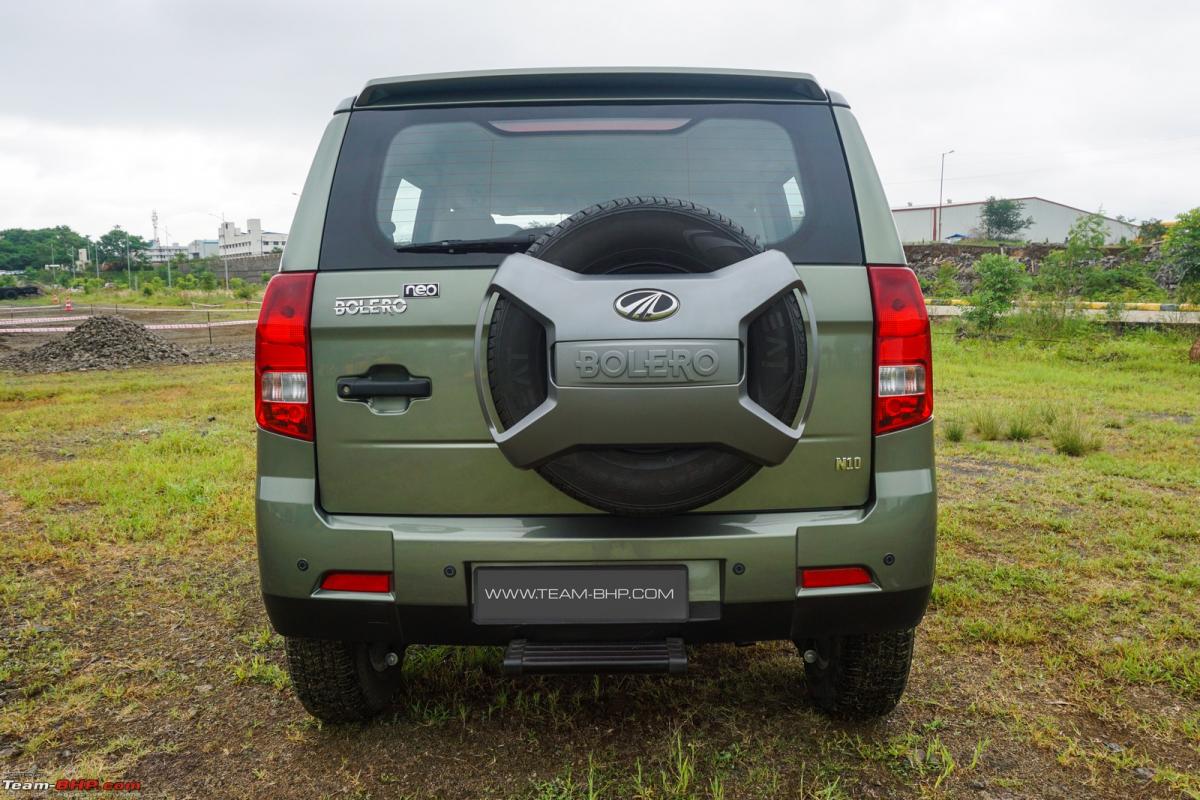
Black side strips have been a signature element of the Bolero, and now the Bolero Neo gets them too! C-pillar is finished in black, while the D-pillar is finished in the body colour - it was the other way round in the TUV300. The door handles are finished in black and plastic cladding around the wheel arches + sides enhances the car's rugged look:
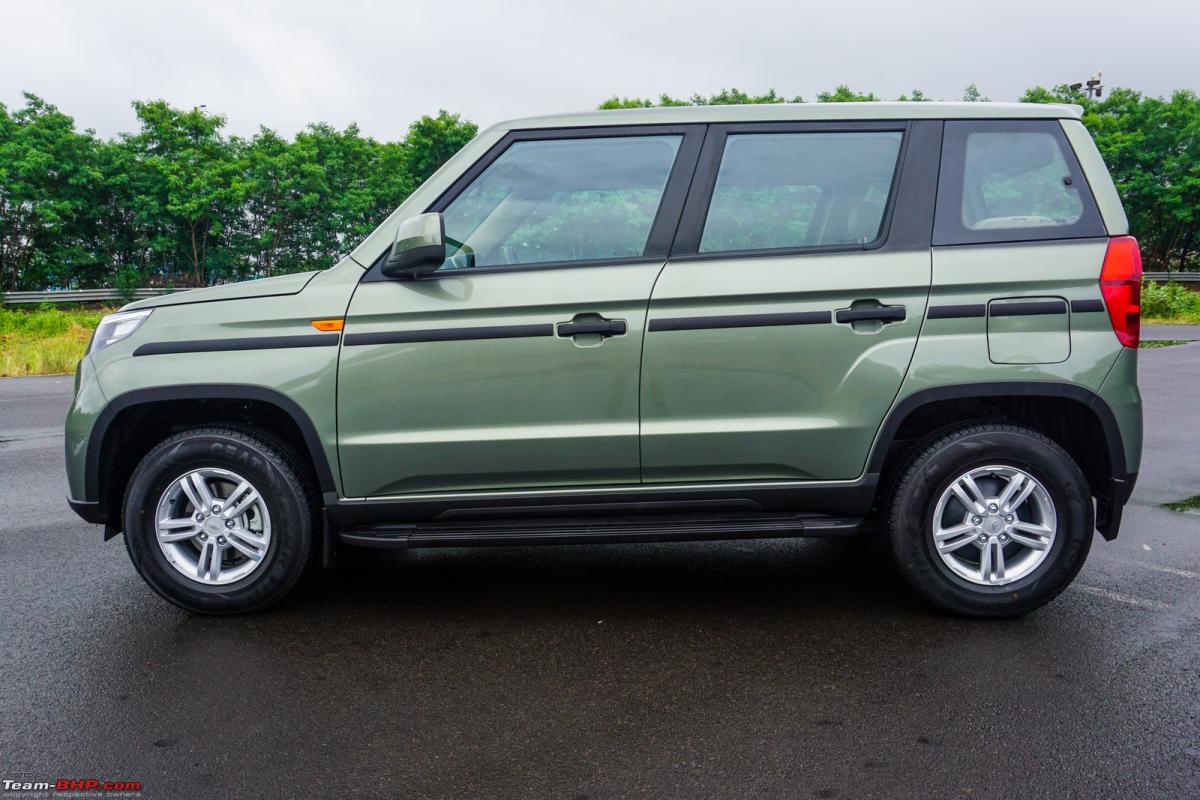
Sleeker headlamp clusters look well proportioned. They get DRL strips at the top and static bending lights:
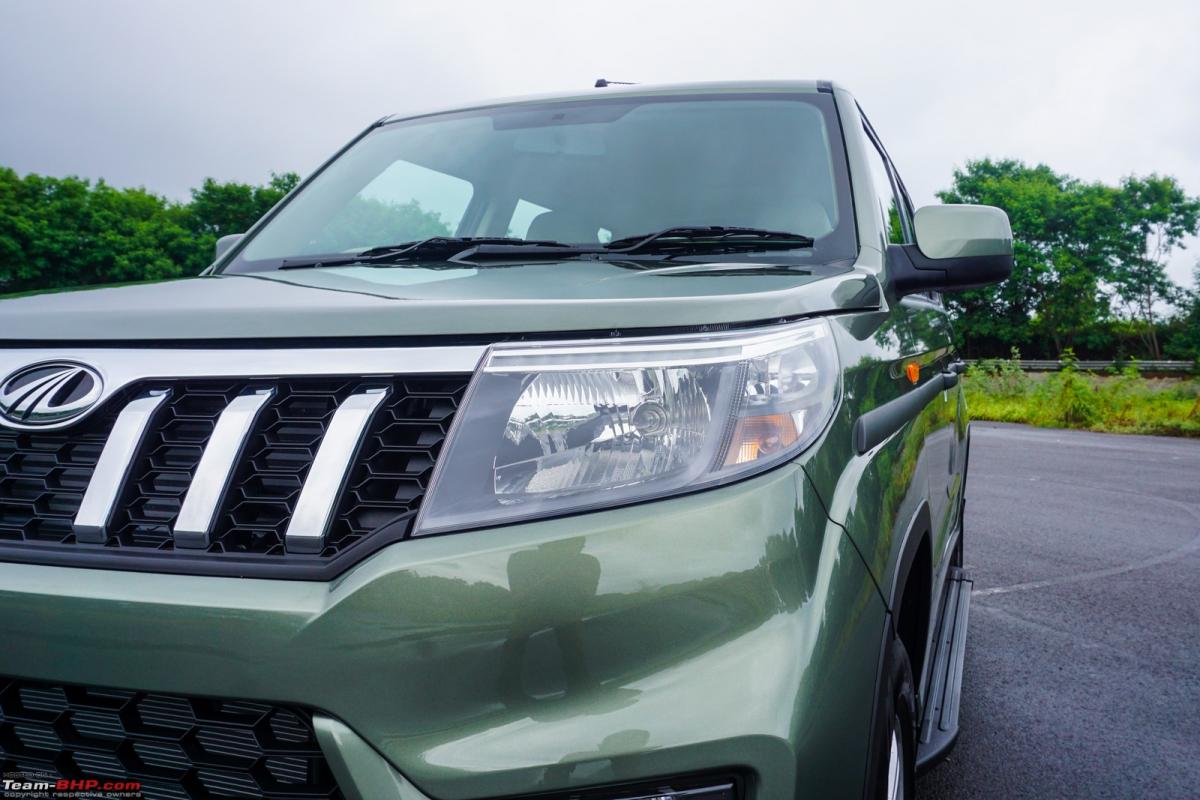
Bolero-like radiator grille sits in between the headlamps. It gets a honeycomb mesh pattern and 6 vertical chrome slats:
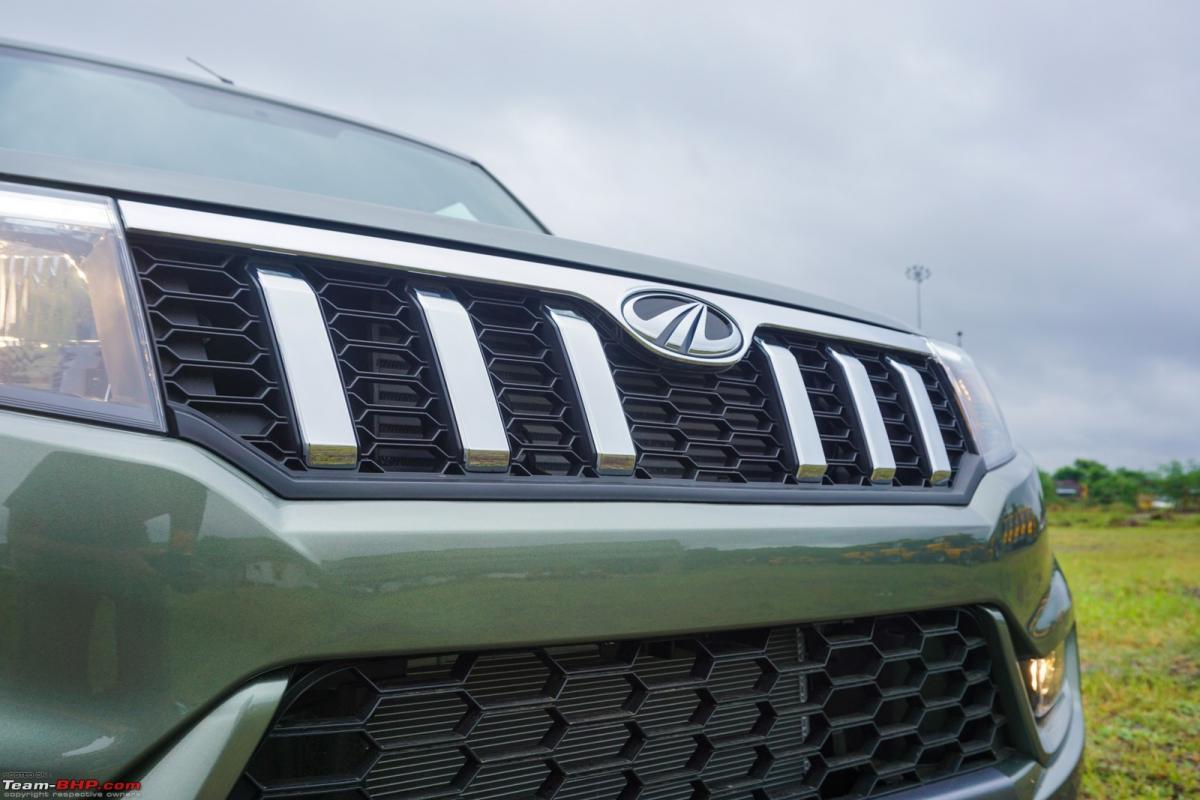
Gone are the big square fog lamps. Instead, you get these smaller oval units in black housings. There are a lot more design elements surrounding the fog lamps:

The big air dam at the bottom has a honeycomb mesh grille below which, there is a faux grey skid plate:

B & C-pillars are finished in black and you get this vinyl on the window line that adds a merging effect into the body colour. Looks cool from a distance, but the finishing could've been better:
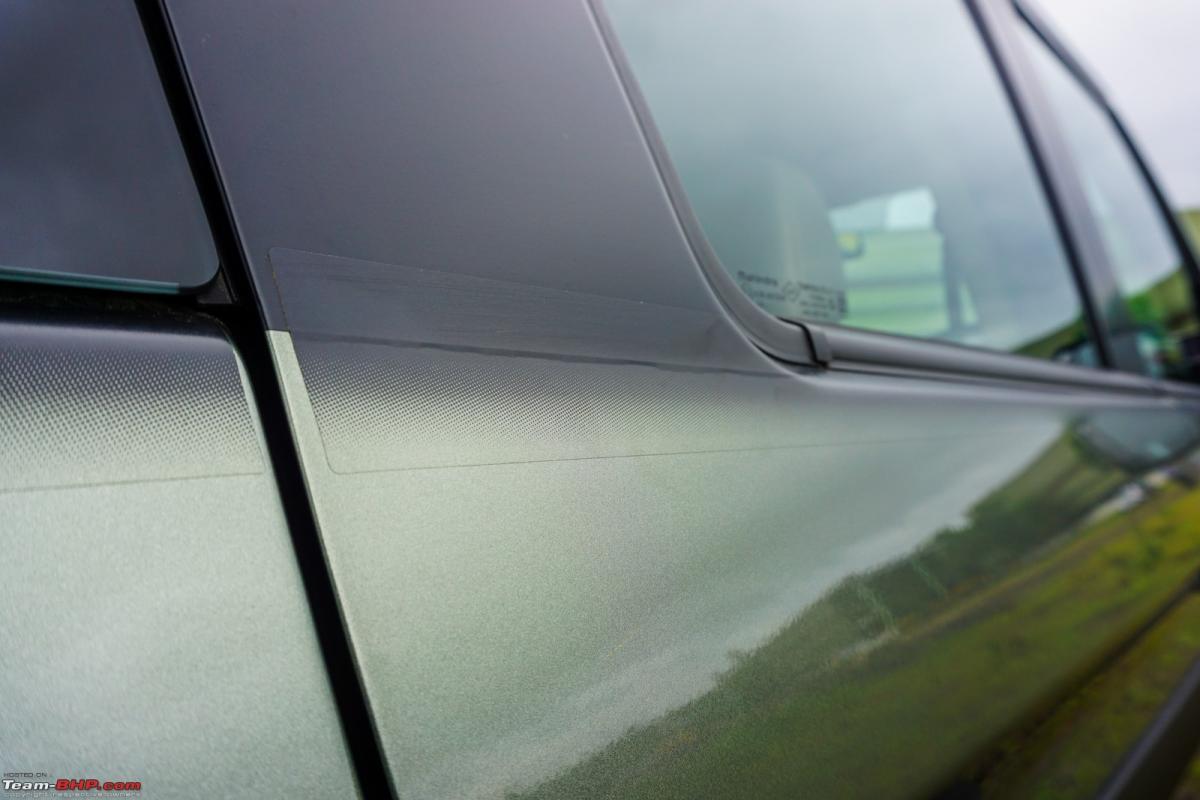
215/75 Ceat Czar tyres are retained. The 15-inch alloy wheels get a simpler design that looks better compared to the TUV300's original rims:
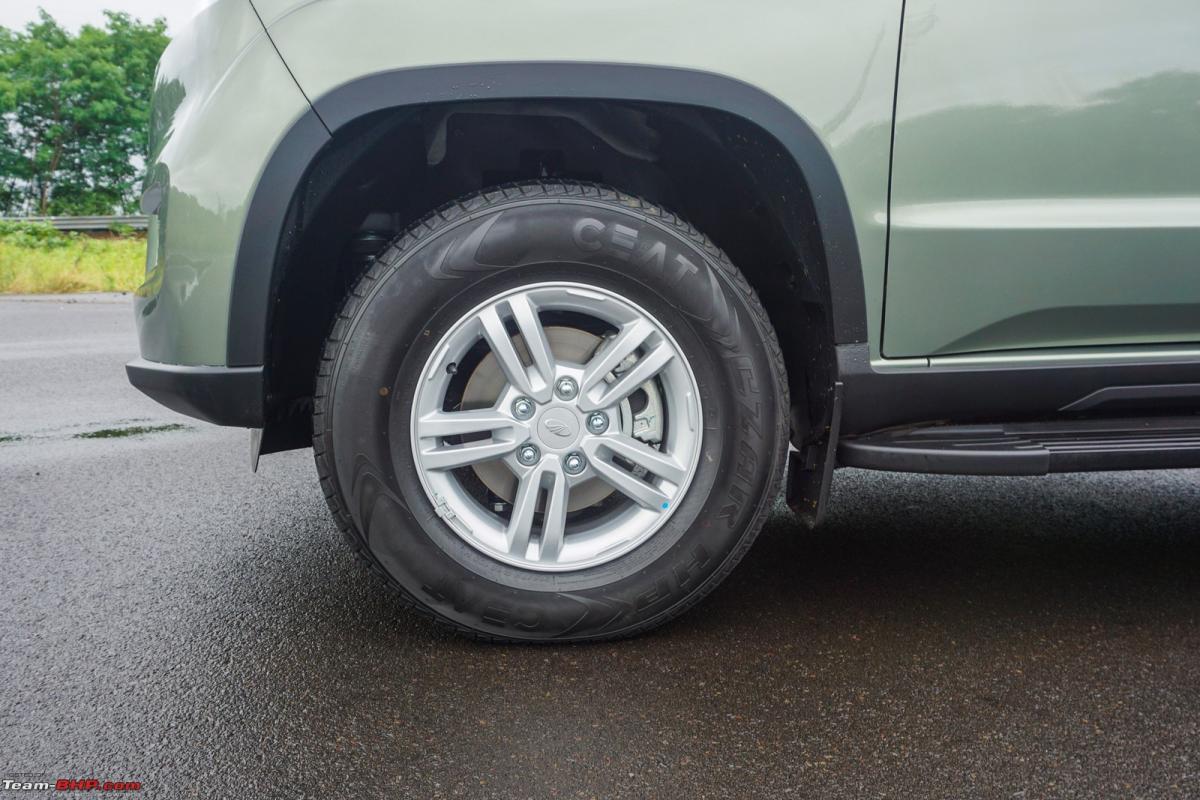
The roof is ribbed for added rigidity, but misses out on roof rails from the TUV300 (reference image):

N8 and N10 variants get a roof spoiler:

Tailgate-mounted spare wheel cover gets the mighty Bolero branding. Door handle is finished in black. 'Bolero Neo' badge sits in the top left corner of the tailgate; Neo means new or a modern version of something, so you know what Mahindra is hinting toward:
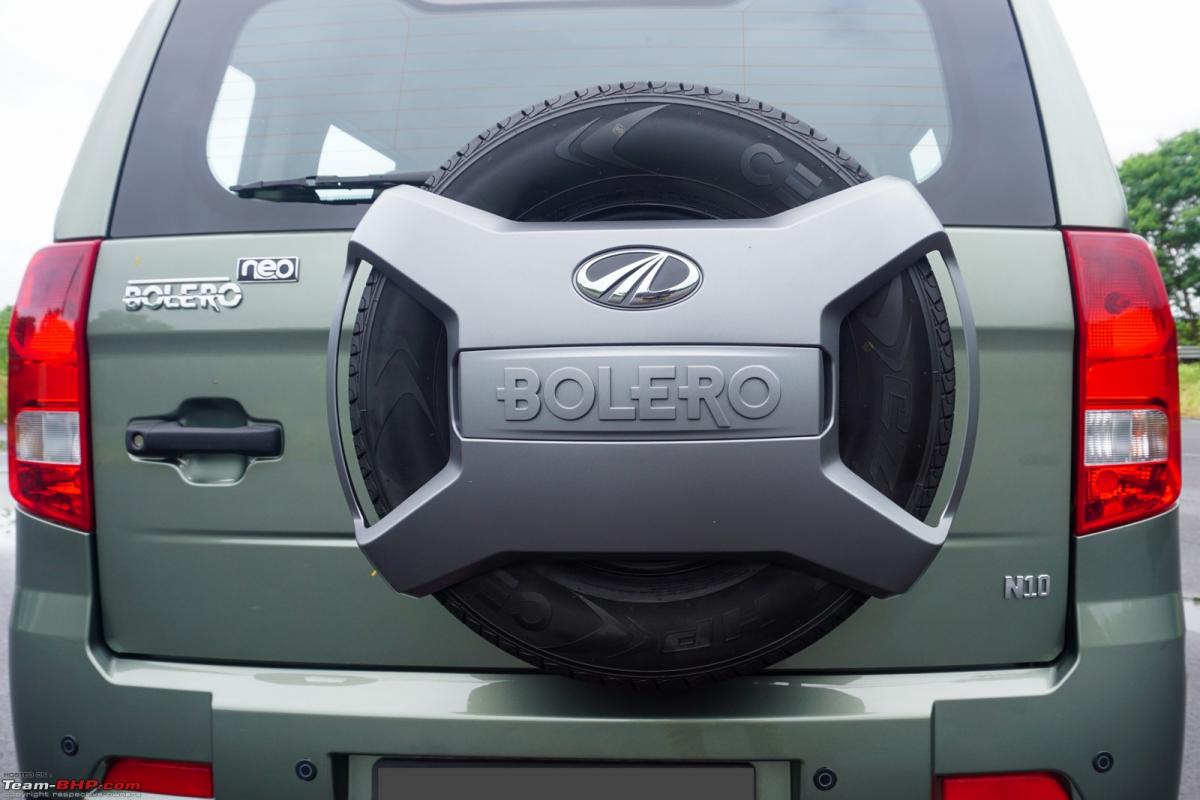
The lower part of the bumper is finished in black and the rear footstep is not foldable:
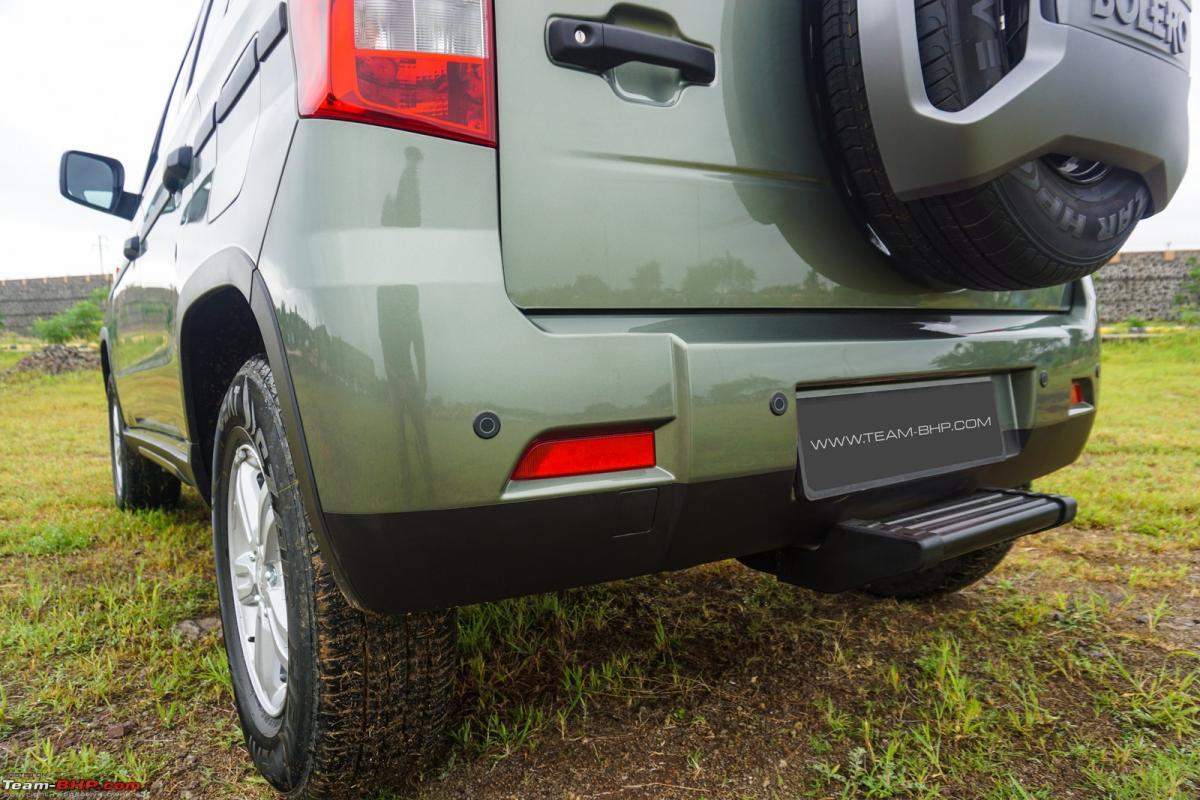
There are 2 shades of white available on the Bolero Neo - Diamond White (N4 & N8 variants) and Pearl White (N10 & N10(O) variants). The one in this picture is the Pearl White colour:

Apart from the white shade, the Bolero Neo is offered in Napoli Black, Highway Red, Rocky Beige (our test car) and Majestic Silver (below):
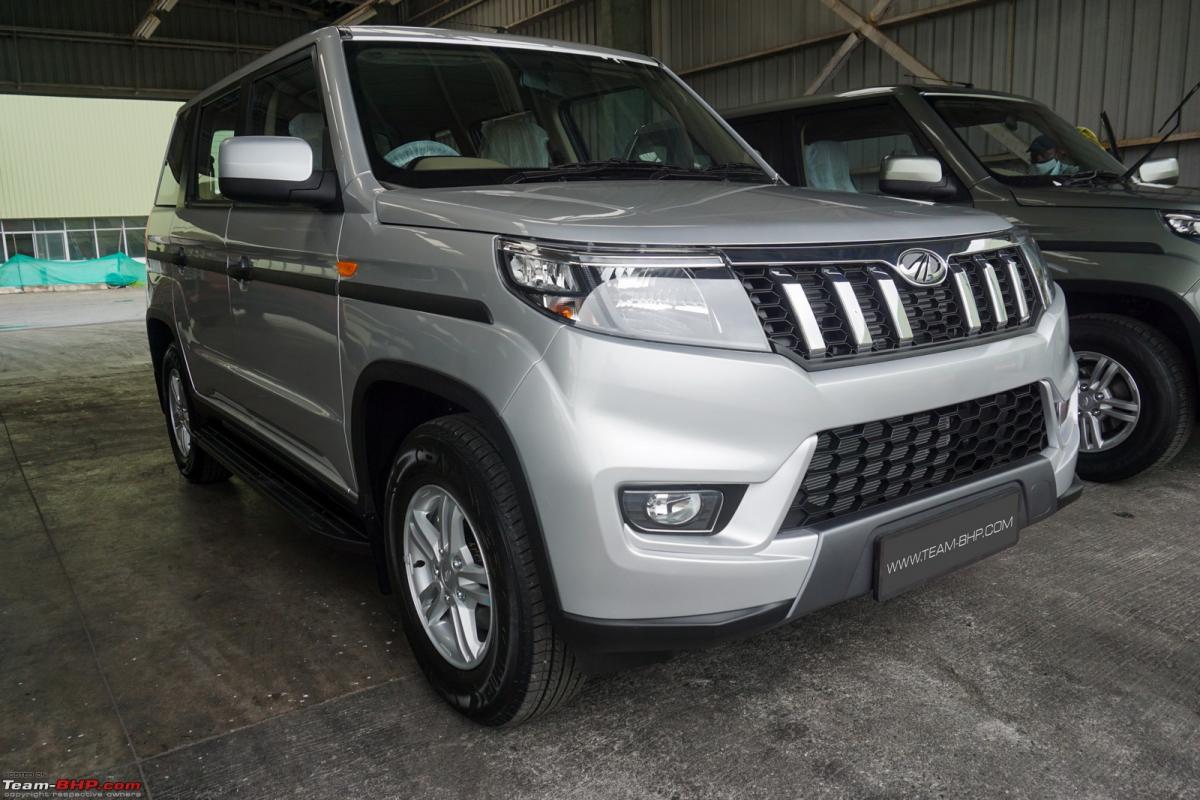
Interior
The cabin of the Bolero Neo is largely similar to that of the 2019 TUV300 facelift. The overall design is simple and straightforward. It looks pleasant & functional:

Steering wheel is identical in design to the outgoing car. Gets buttons to operate the cruise control on the right spoke:

One of the major changes on the inside is the new instrument cluster. The upmarket unit with chrome-ringed dials has been replaced by a simpler-looking cluster with a new MID.
MID is controlled via two stalks at the bottom and displays all the basic information such as an odometer, 2 trip meters, digital speedometer, system warnings, average fuel efficiency, etc. The display is clean and crisp and looks nicer than the previous version's calculator font (reference image):

7-inch touchscreen head-unit supports Mahindra's BlueSense App. However, Android Auto and Apple CarPlay are not supported! Disappointing:
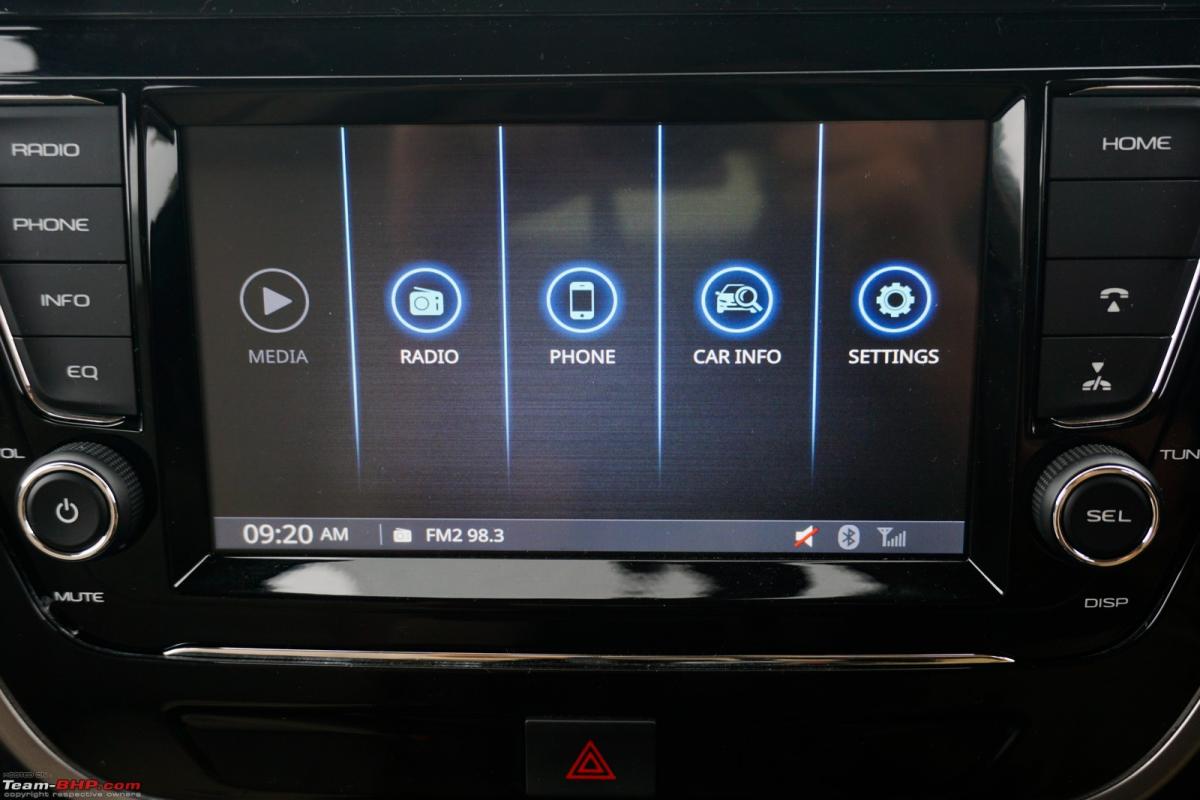
Mahindra offered leatherette seats on the TUV300 Plus and also the 2019 TUV300 facelift (reference image). But in the Bolero Neo, you get fabric seats that not only get soiled quite easily, but just don't feel that premium. Moreover, Mahindra has removed the manual lumbar support (reference image) and the under-seat storage (reference image) in the Bolero Neo:

The roof lamp is carried over from the TUV300, but there's a change in the design of the Bluetooth mic:

The flippy key looks premium and is shared with the Thar & Marazzo:

The rear bench is pretty much flat. Space is fair for a sub-4 meter vehicle:
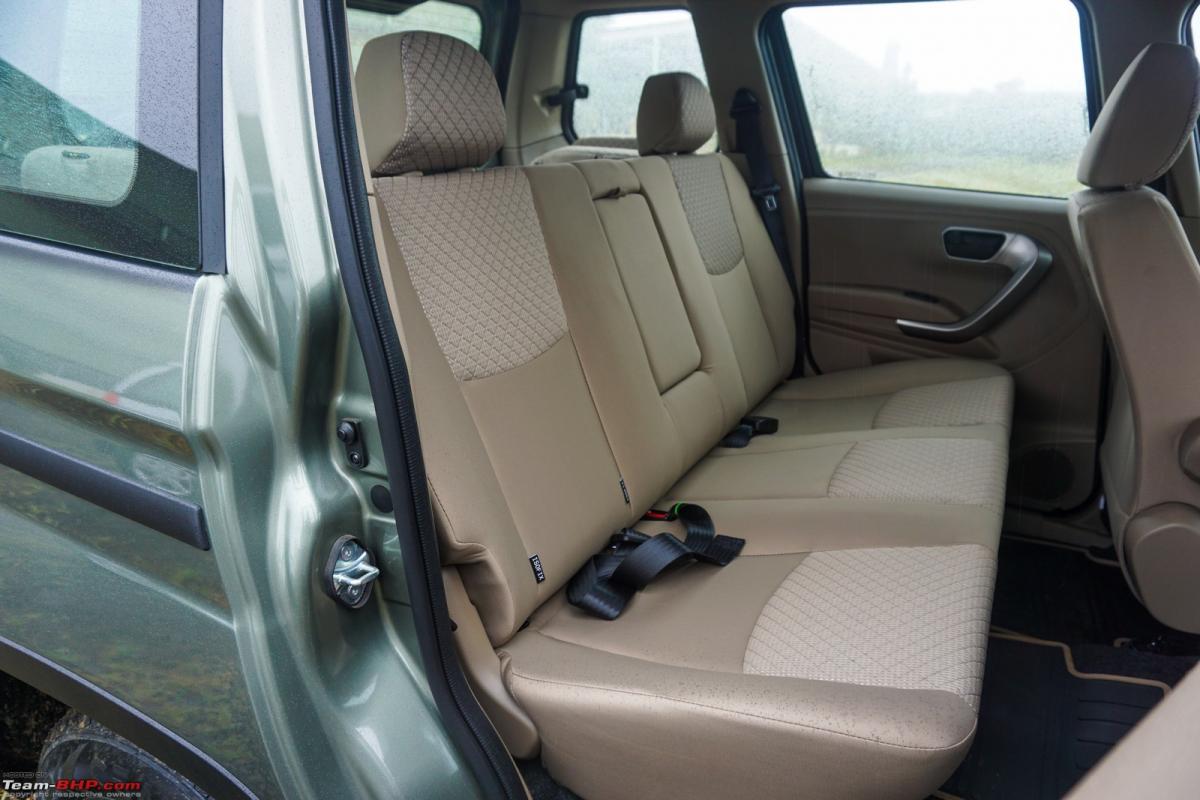
This is me (5'10" tall) seated behind my own driving position:
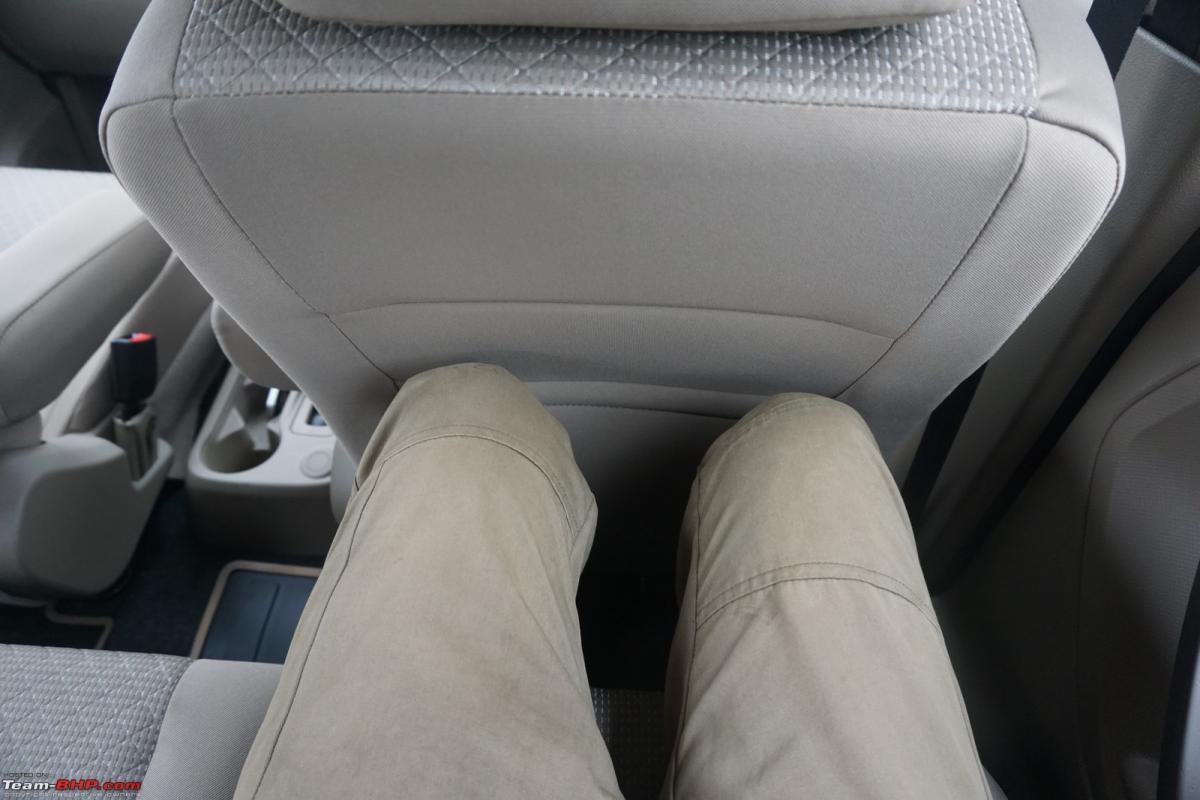
Only one child seat can be fitted on the rear seat bench:

The middle row gets this cheap-looking roof light. The TUV300 had a more upmarket unit (reference image):

Tailgate gets a low-budget cover on the inside. It loses the full cladding with the useful storage pockets + bottle holder from the TUV300 (reference image):

Instead, you get a simple seatback pocket behind the second row. The third row of seats is the same as before:
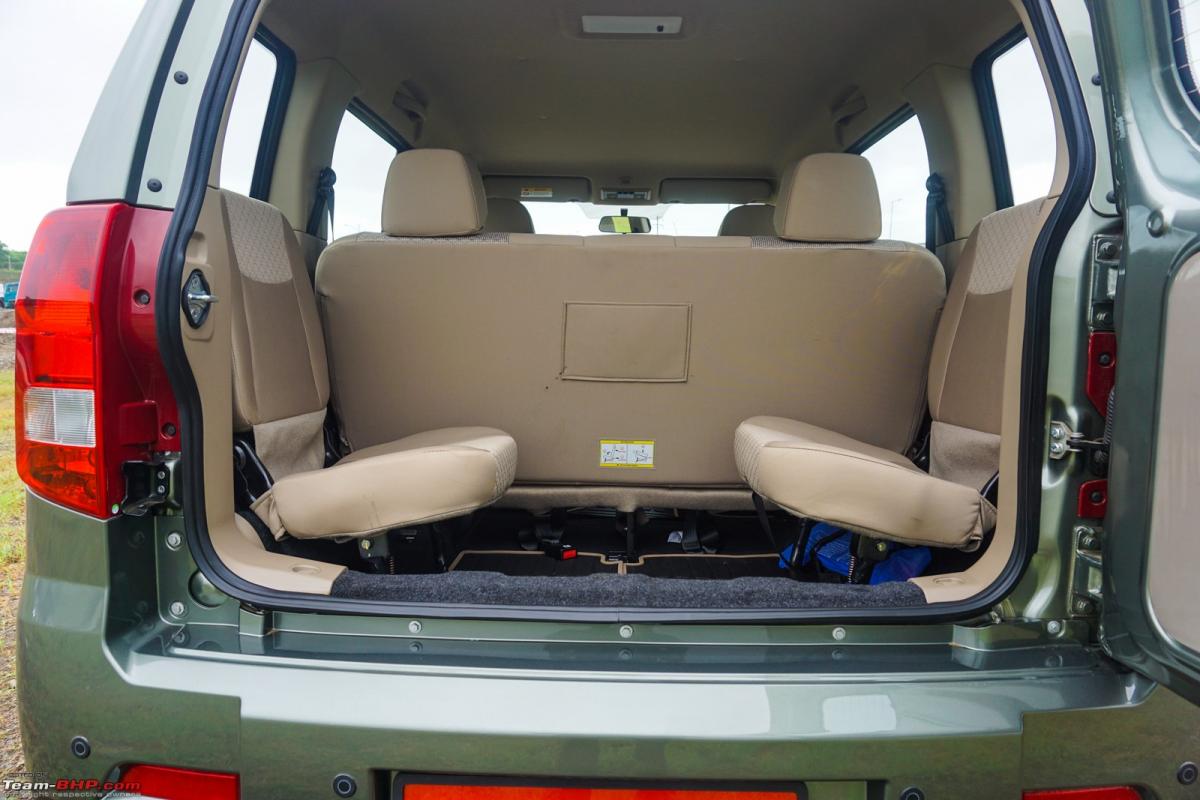
- Tags:
- Indian
- Bolero Neo
- Preview
- Review
- TUV300
News
Mahindra Bolero Neo launched at Rs. 8.48 lakh
The Bolero Neo is available in three variants. The top-spec N10 variant gets a mechanically locking differential.
Mahindra has announced the launch of the Bolero Neo. The SUV is available in three variants - N4, N8 and N10 and is being offered at an introductory price of Rs. 8.48 lakh (ex-showroom, India).
The Bolero Neo is essentially a renamed TUV300. It is a body-on-frame SUV that is based on the third-generation chassis shared with the Scorpio and Thar.
As part of the update, the Bolero Neo gets a refreshed front fascia with a 6-slat grille and reprofiled headlamp clusters and daytime running lights. It also gets a redesigned front bumper that houses a pair of fog lamps. The SUV rides on 5-spoke alloy wheels.
The Bolero Neo can seat up to 7 people. The interiors are finished in a dual-tone colour scheme. The dashboard layout is similar to the outgoing model and houses a 7-inch touchscreen infotainment head-unit in the centre.
Bolero Neo feature highlights:
- 7-inch touchscreen infotainment system
- Cruise Control
- Blue Sense mobile app
- Reverse Assist
- Eco Mode
- Front and rear centre armrest
The Bolero Neo is powered by Mahindra's 1.5-litre mHawk100 diesel engine. It puts out 100 BHP and 260 Nm and comes mated to a 5-speed manual transmission. The engine has an Eco Mode and comes with an auto start / stop feature. The top-spec N10 variant comes with a mechanically locking differential.
Bolero Neo colour options:
- Rocky Beige
- Majestic Silver
- Highway Red
- Pearl White
- Diamond White
- Napoli Black
- Royal Gold (coming soon)
- Tags:
- Indian
- Bolero Neo
- TUV300
News
Mahindra Bolero Neo spotted at dealership ahead of launch
The Bolero Neo is scheduled to go on sale on July 15, 2021.
The Mahindra TUV300 has been re-christened as the 'Bolero Neo'. The updated model has been spotted at a dealership ahead of its official launch scheduled for July 15, 2021.
The Bolero Neo gets quite a few exterior updates to make it more appealing to the customers. The SUV gets a redesigned front fascia featuring a 6-slat grille, updated halogen headlamps, a new front bumper housing a pair of fog lamps and a new set of alloy wheels.
The rear looks identical to the outgoing TUV300 except for the bumper which appears to have been reworked. It has the same wraparound tail lamps and a tailgate-mounted spare wheel.
On the inside, the Bolero Neo comes with a dual-tone colour scheme, which makes it look less utilitarian. The centre console houses a touchscreen infotainment head unit.
Reports suggest that the Bolero Neo is likely to be offered with a 1.5-litre mHawk100 diesel engine. This unit produces 100 BHP and 240 Nm and is expected to be paired with either a 5-speed manual or 5-speed AMT.
Source: Rushlane
- Tags:
- Indian
- TUV300
- Bolero Neo
- spy shots
News
Rumour: Mahindra Bolero Neo to be launched on July 15
The Bolero Neo is expected to be positioned above the standard Bolero.
We have seen spy images of the Bolero Neo and more recently, Mahindra even released a teaser. Still, there has been no official word about its launch date.
According to a media report, Mahindra is likely to launch the Bolero Neo on July 15, 2021. The SUV is expected to be positioned above the standard Bolero and could be offered in three variants - N4, N8 and N10.
Don't let the name fool you, as the Bolero Neo is essentially an updated TUV300. Mahindra has given it a new front fascia featuring a revised grille and headlamp clusters as well as a redesigned front bumper. On the inside, the SUV is expected to receive minor changes like a new infotainment system and seat upholstery.
The Bolero Neo is likely to be offered with a 1.5-litre mHawk100 diesel engine producing 100 BHP and 240 Nm. Transmission options might include a 5-speed manual and 5-speed AMT.
Source: Carwale
- Tags:
- Indian
- Bolero Neo
- Bolero
- TUV300
News
Rumour: Mahindra Bolero Neo to be offered in 3 variants
Mahindra is likely to offer the Bolero Neo in three variants - N4, N8 and N10.
While it hasn't received as much attention as the XUV700, Mahindra is also planning to launch the updated TUV300 sometime this year. Expected to be branded as the Bolero Neo, the SUV will be positioned above the standard Bolero.
According to a media report, Mahindra is likely to offer the Bolero Neo in three variants - N4, N8 and N10. Under the bonnet will be a 1.5-litre diesel engine producing 100 BHP and around 240 Nm. However, it is still unclear if the SUV will get the option of a 1.2-litre petrol engine.
Spy images have revealed that the Bolero Neo will get a redesigned front fascia with a new grille and re-profiled headlamp clusters. The front bumper has also been tweaked and houses a pair of fog lamps.
The SUV is also expected to receive some minor interior updates including a new infotainment head-unit and seat upholstery among others.
Source: Motorbeam
- Tags:
- Indian
- TUV300
- Bolero Neo
News
Mahindra TUV300 facelift spied sans camouflage
Rumours suggest that it could be renamed as the Bolero Neo.
The upcoming Mahindra TUV300 facelift has been spotted during an ad shoot. The latest spy shots reveal most of the exterior changes that have been made to the car. Rumours suggest that it could be renamed as the Bolero Neo.
The updated TUV300 will get a redesigned grille with chrome inserts flanked by re-profiled headlamp clusters. The front bumper has also been tweaked and houses a trapezoidal air dam with fog lamps on either side. The overall shape of the TUV300 remains unchanged though. The slab side rear fascia has been carried over as well.
The TUV300 could also get minor interior updates including a new infotainment head-unit and seat upholstery to name a few.
The TUV300 Plus facelift is expected to be offered with a 1.5-litre diesel engine paired with a 6-speed manual or 6-speed AMT. Mahindra might also introduce a 1.2-litre petrol unit that could be paired with a 6-speed manual gearbox.
Source: Motorbeam
- Tags:
- Indian
- TUV300
- Bolero Neo
- spy shots
Pages



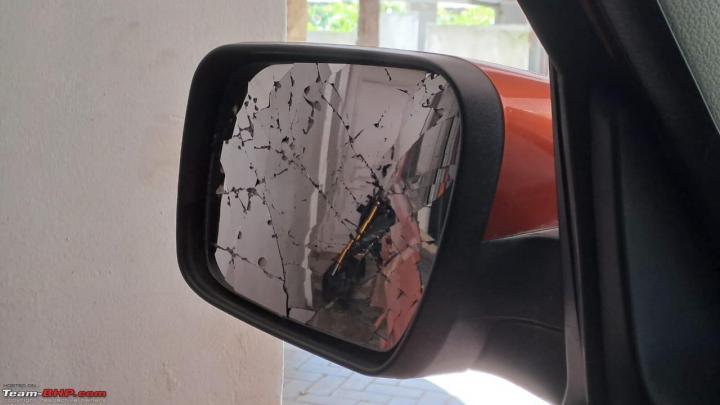

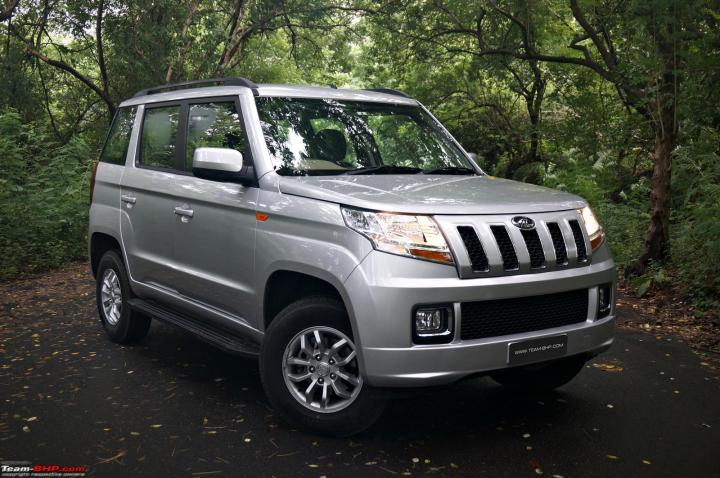



.jpg)



.jpg)

